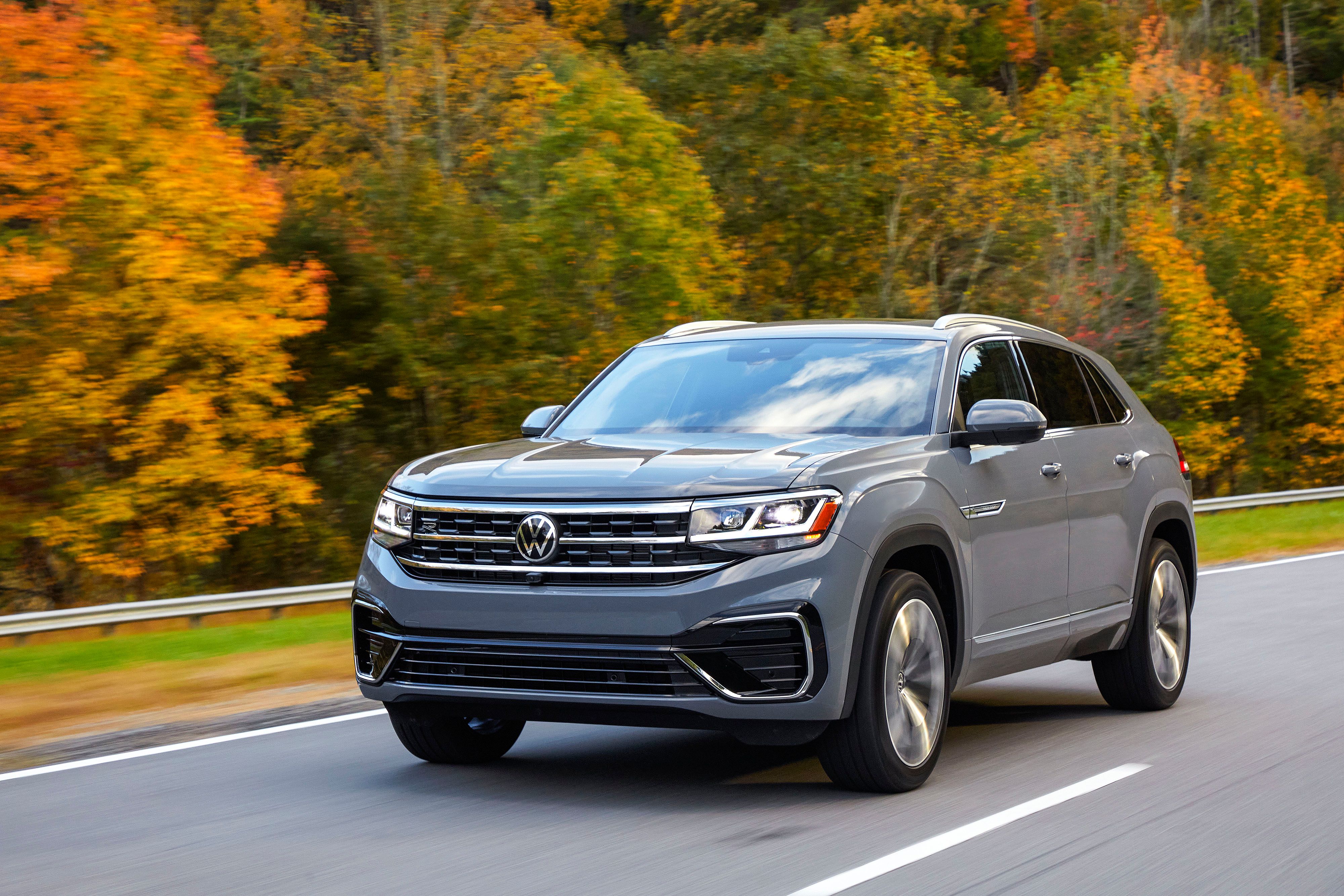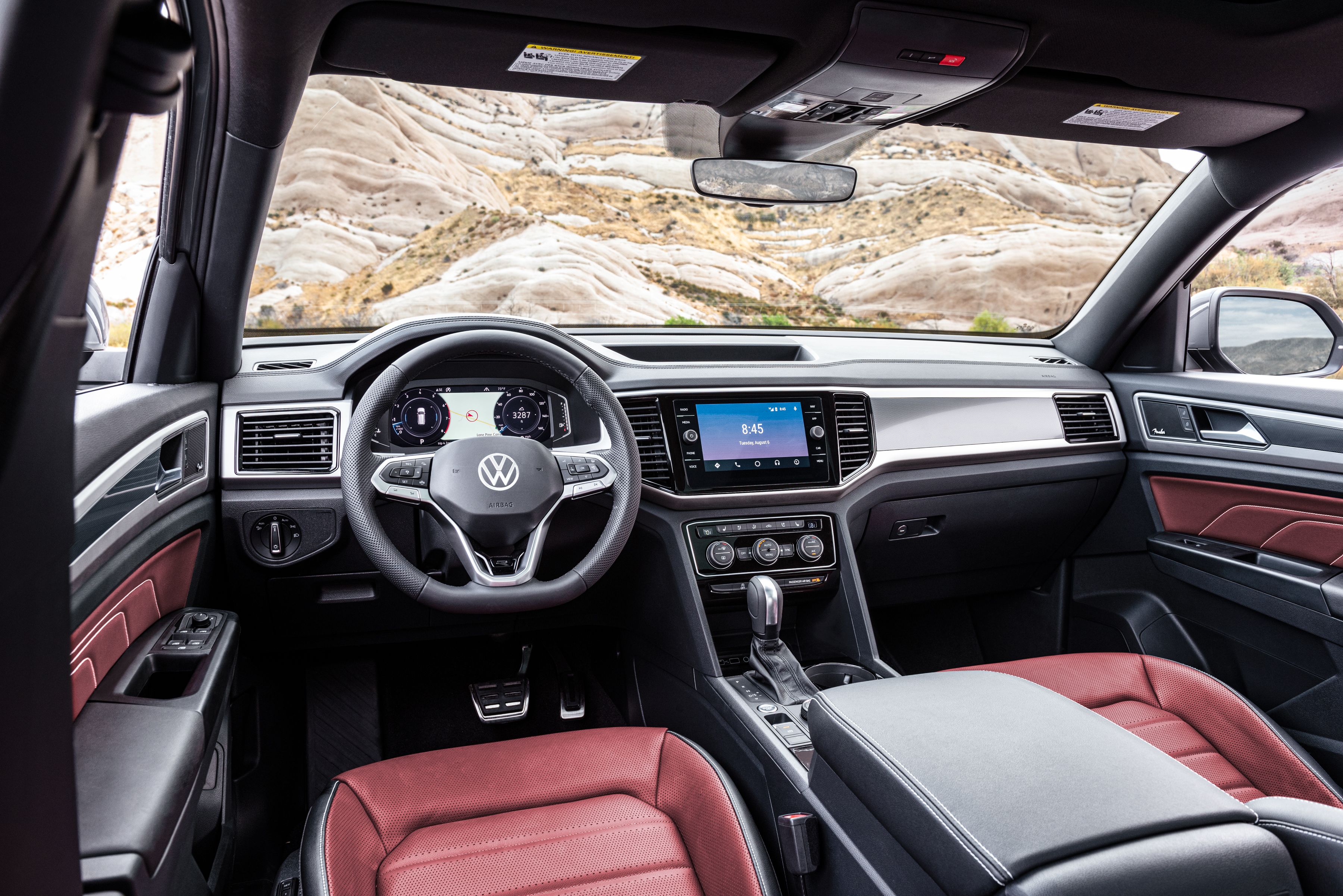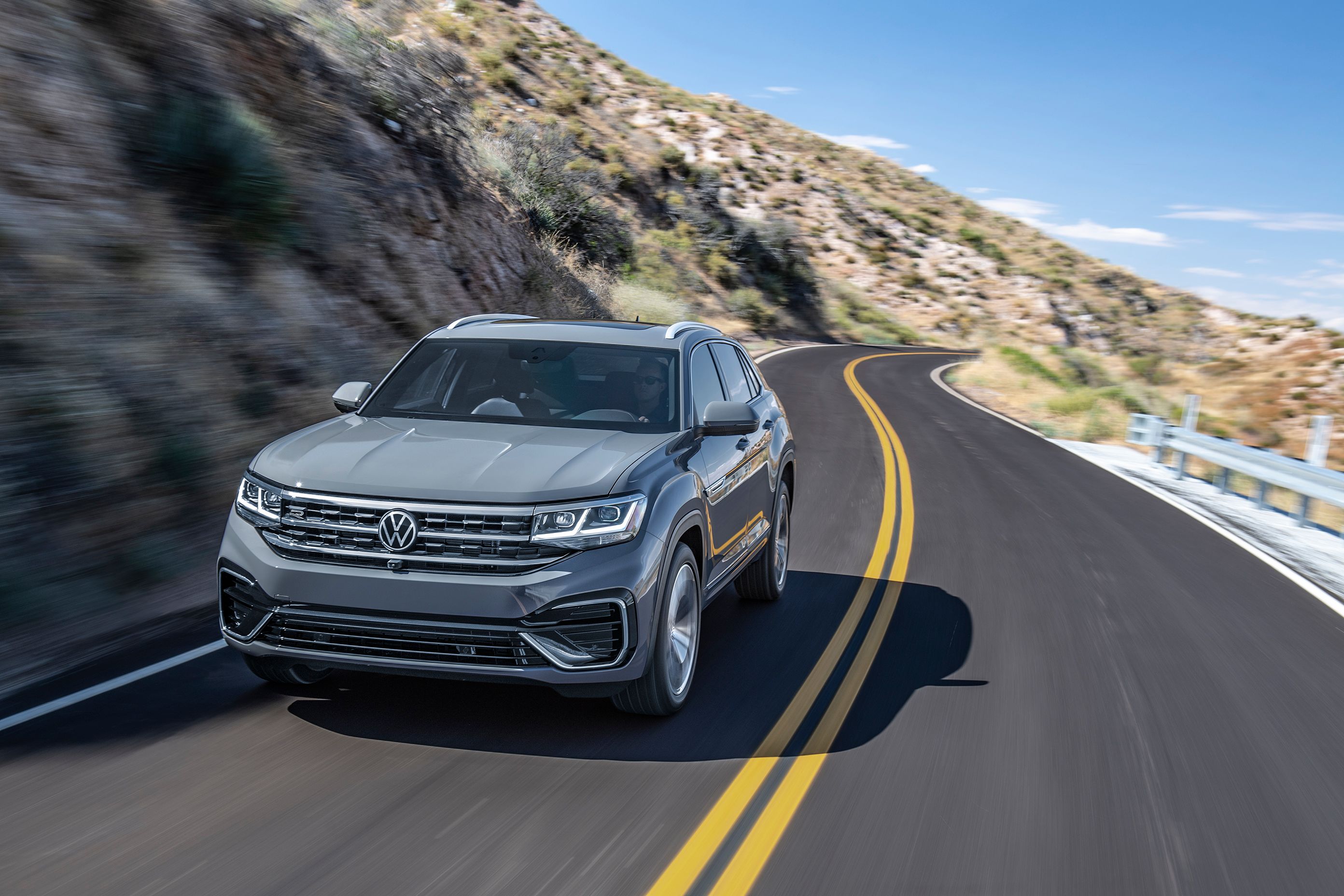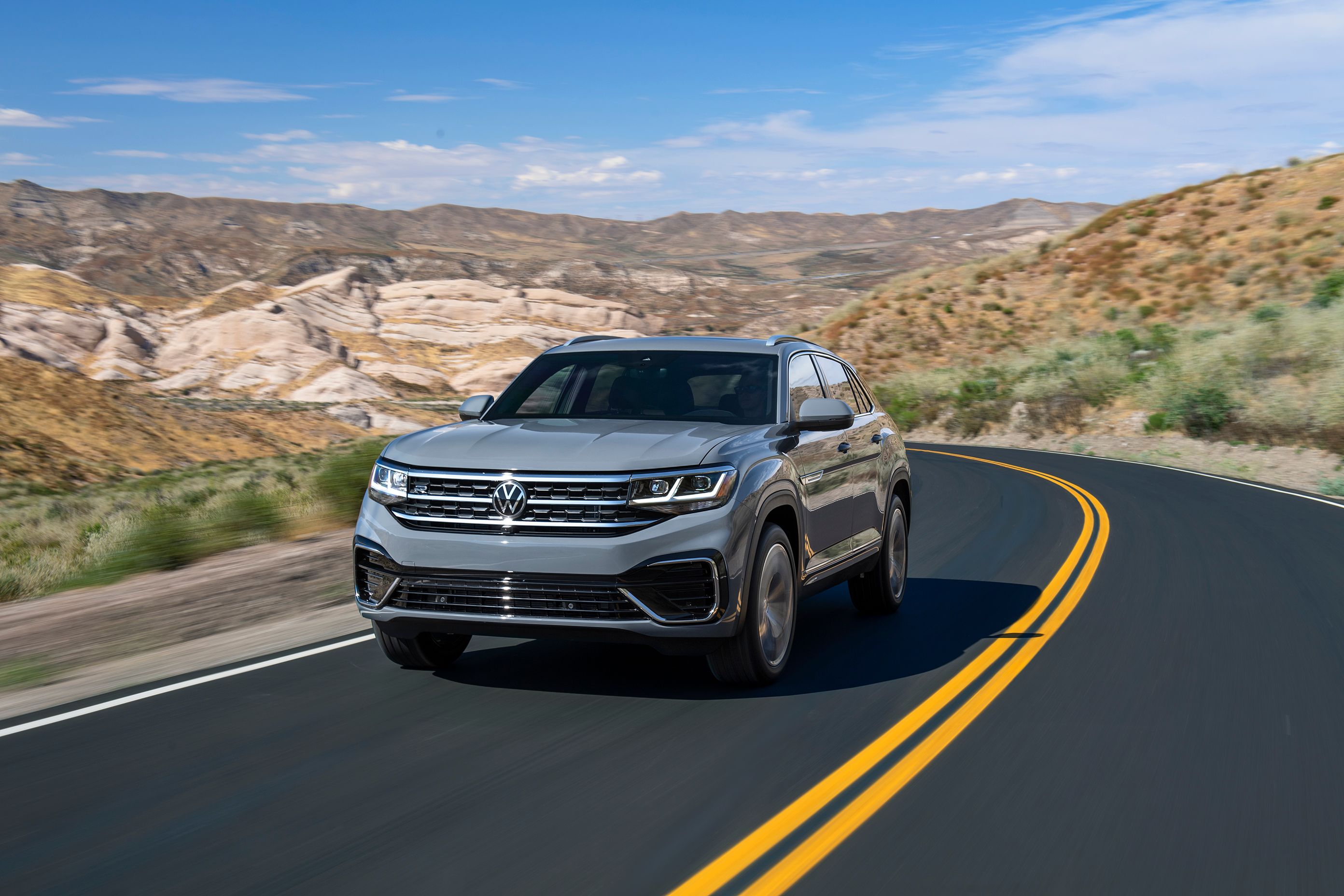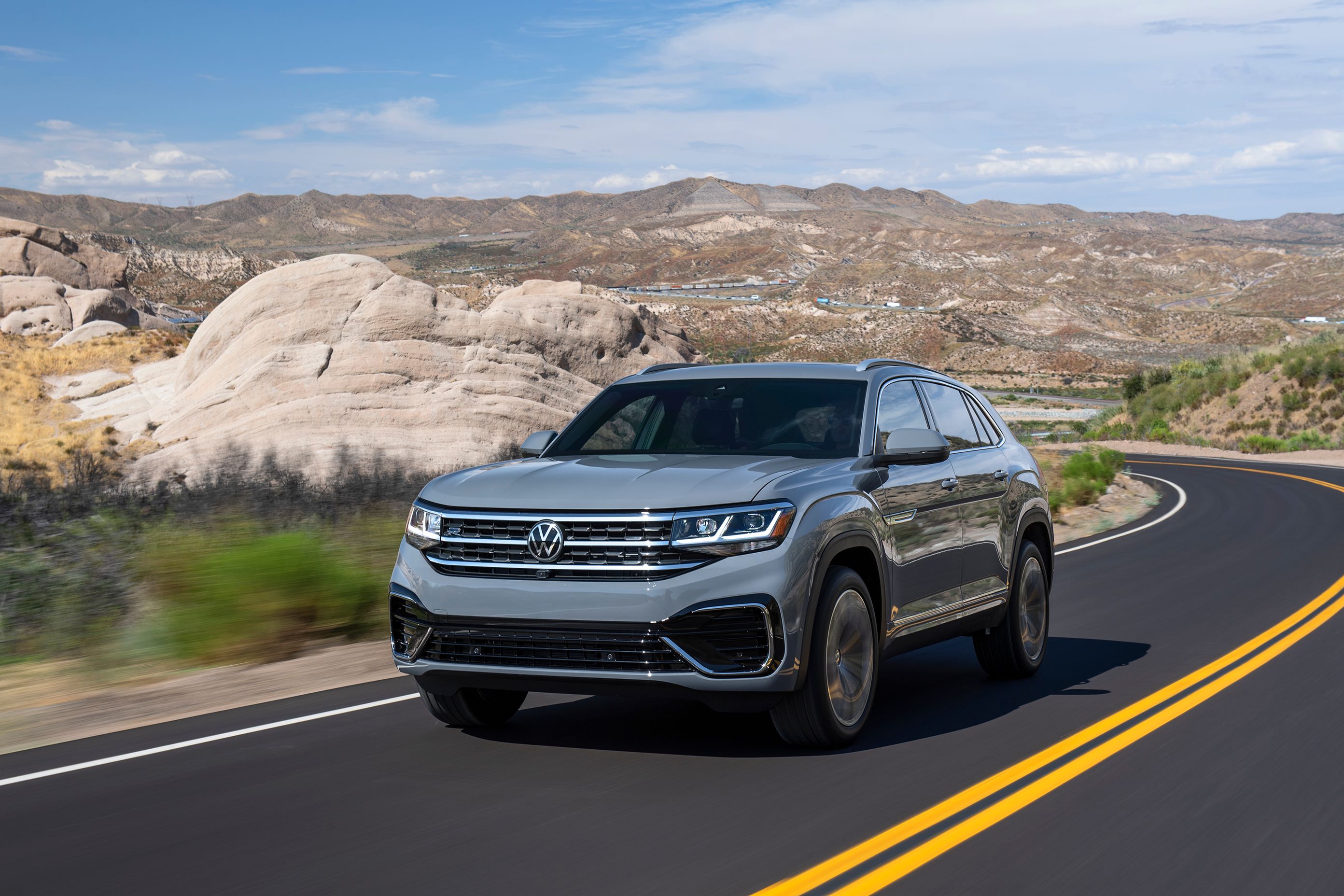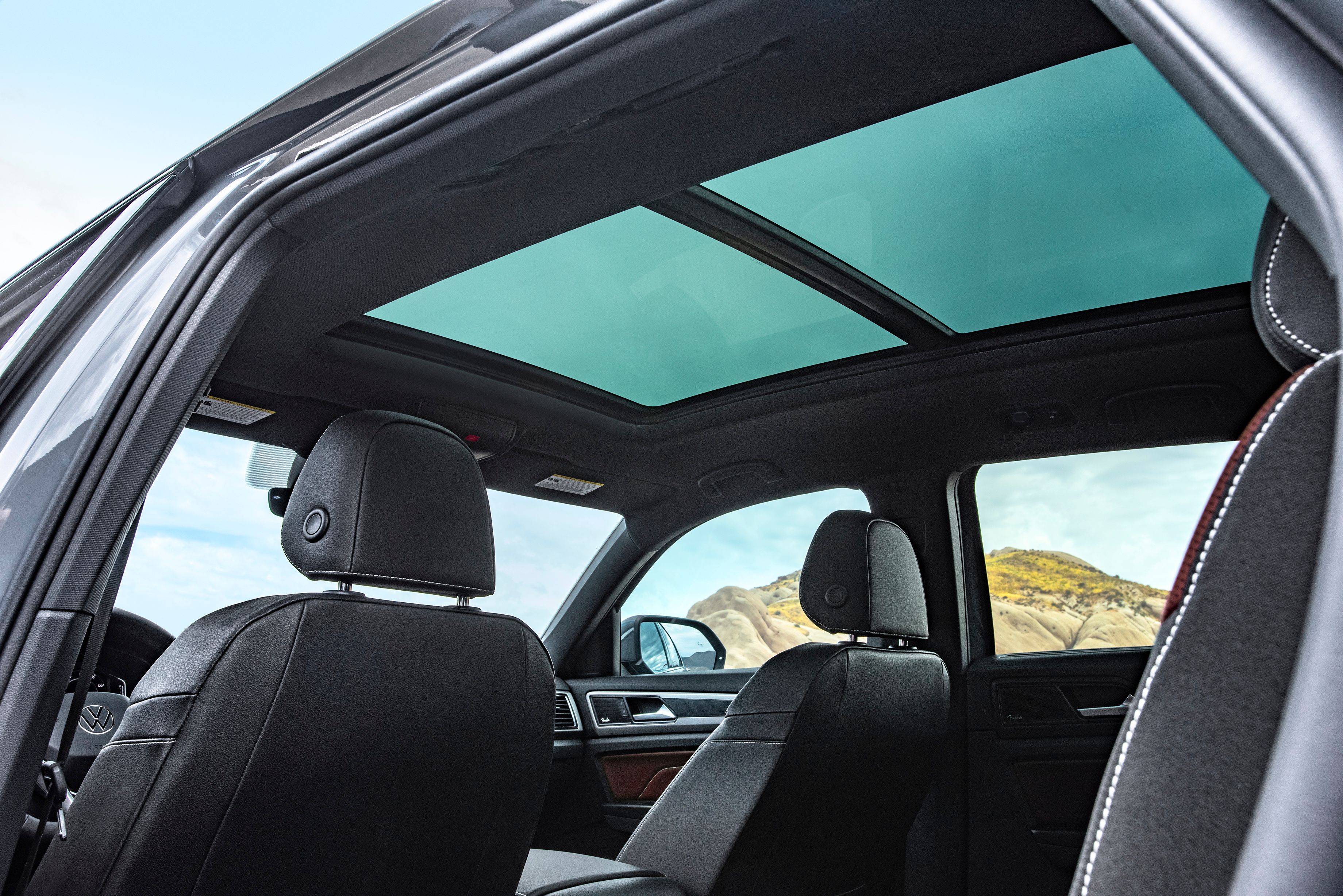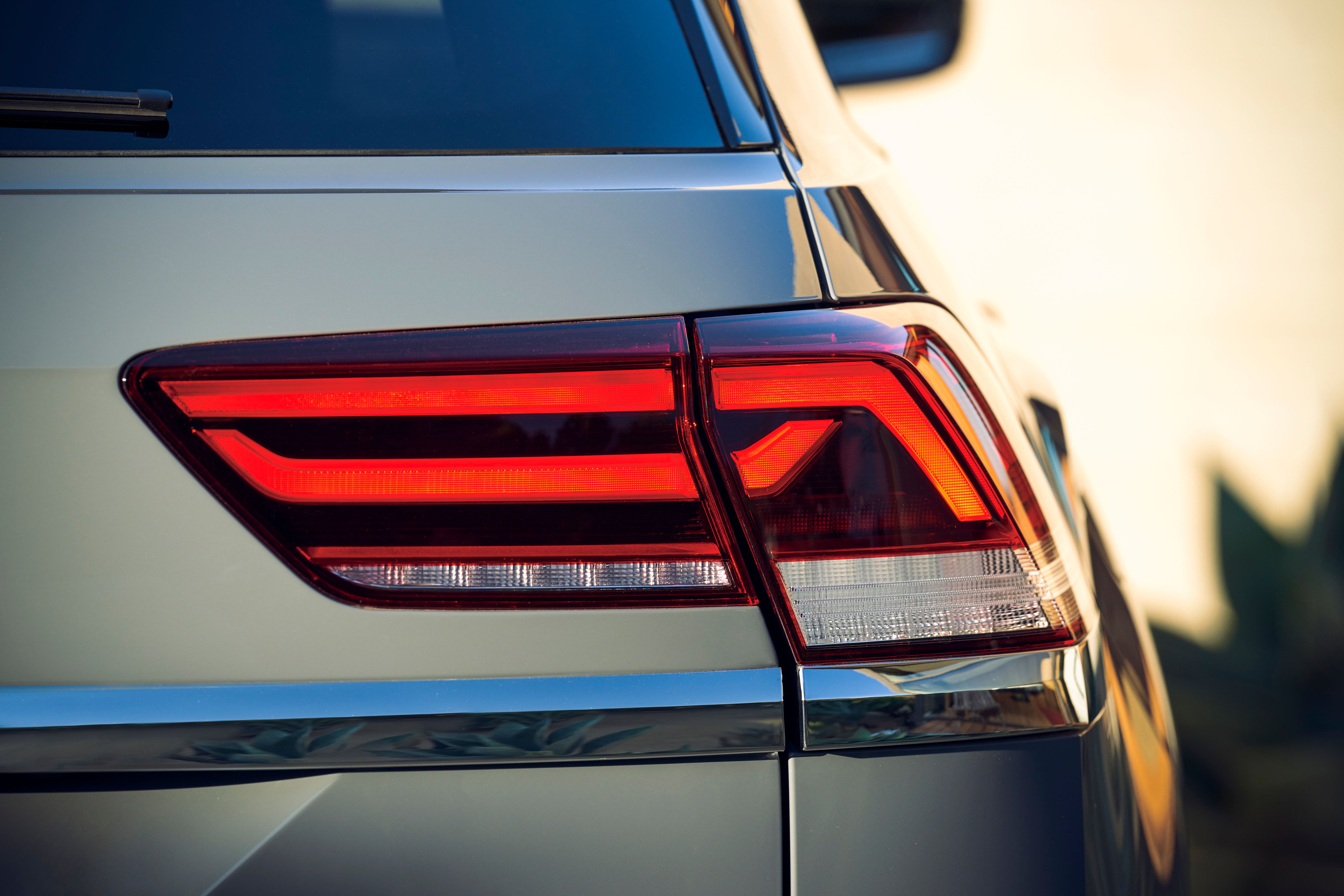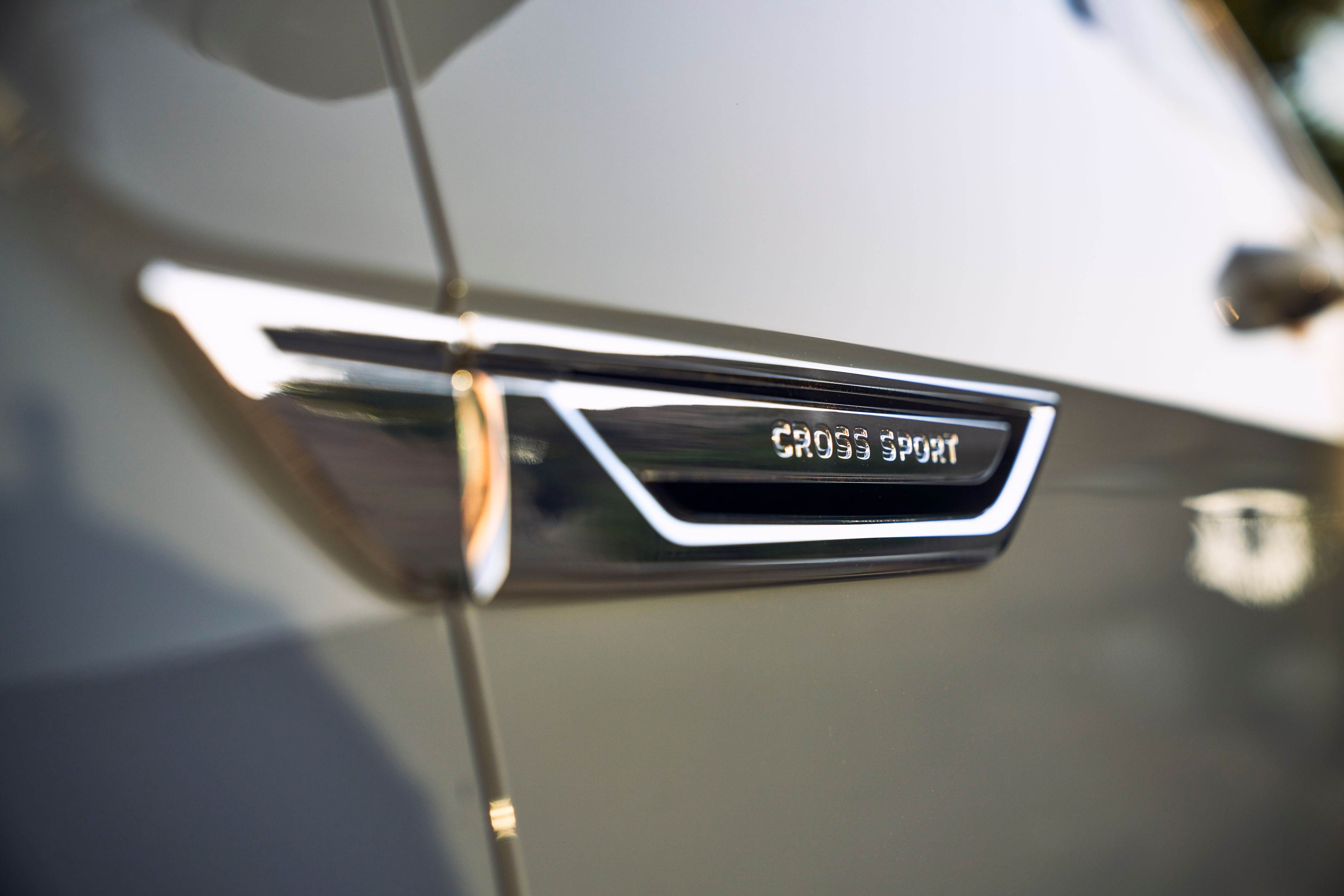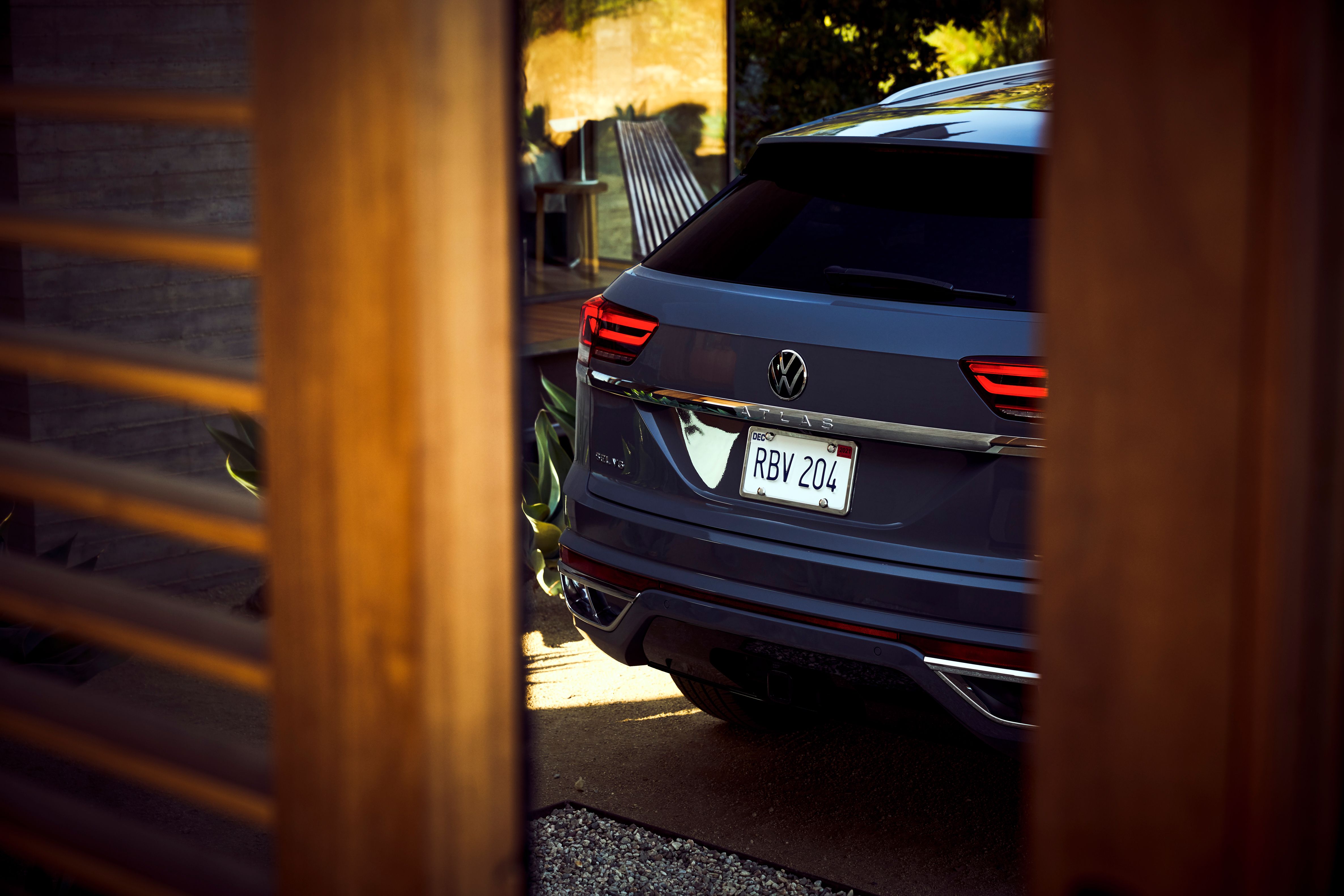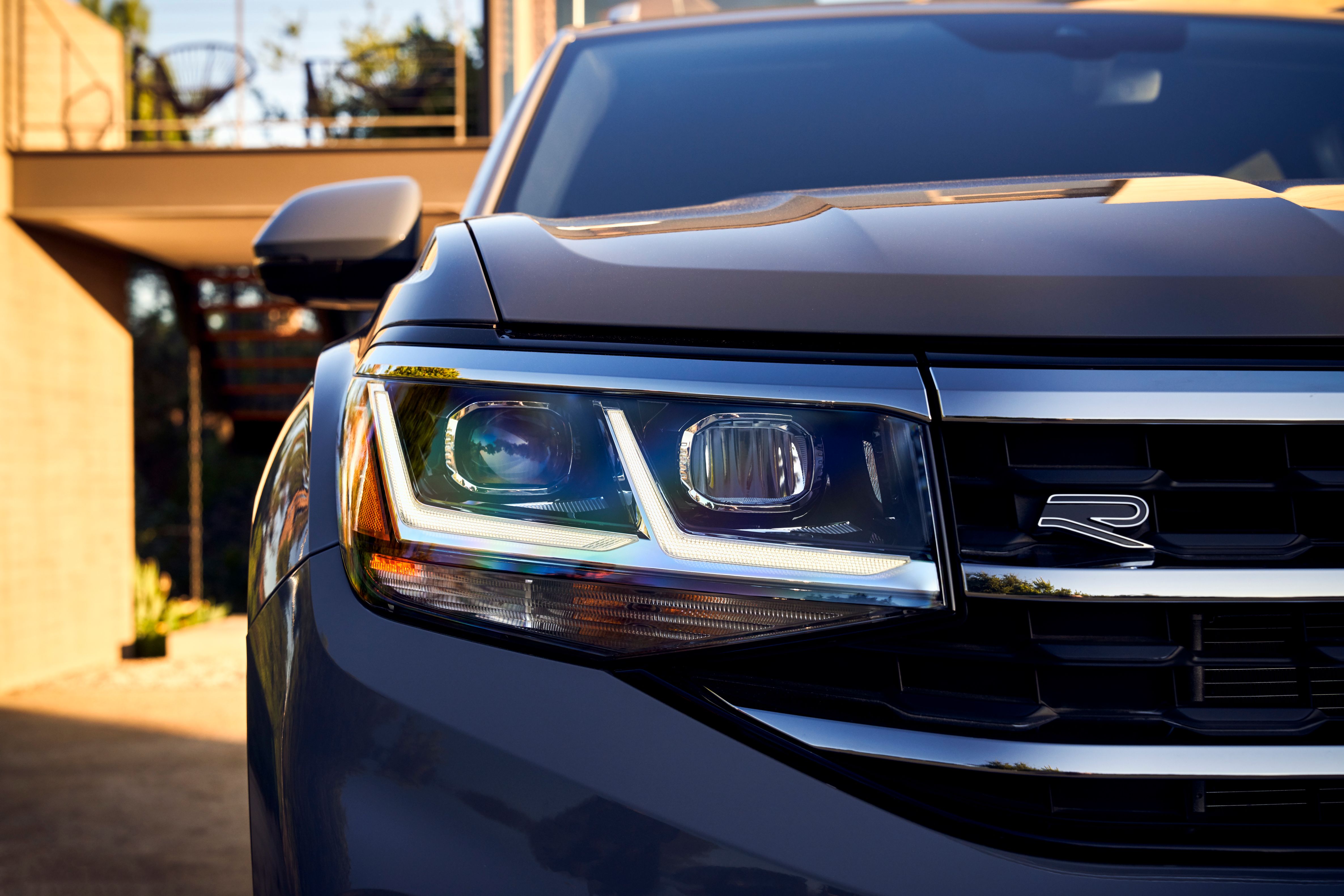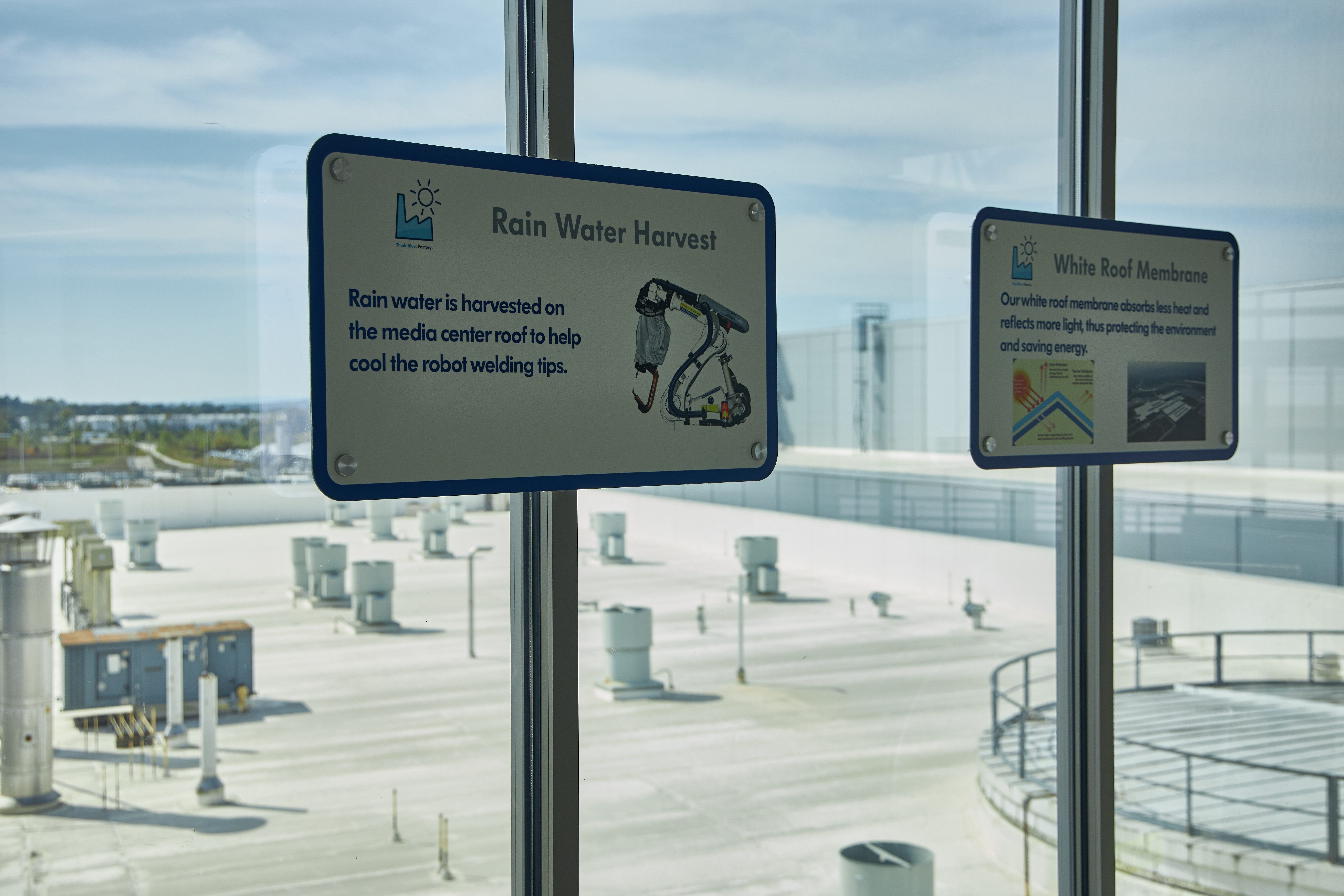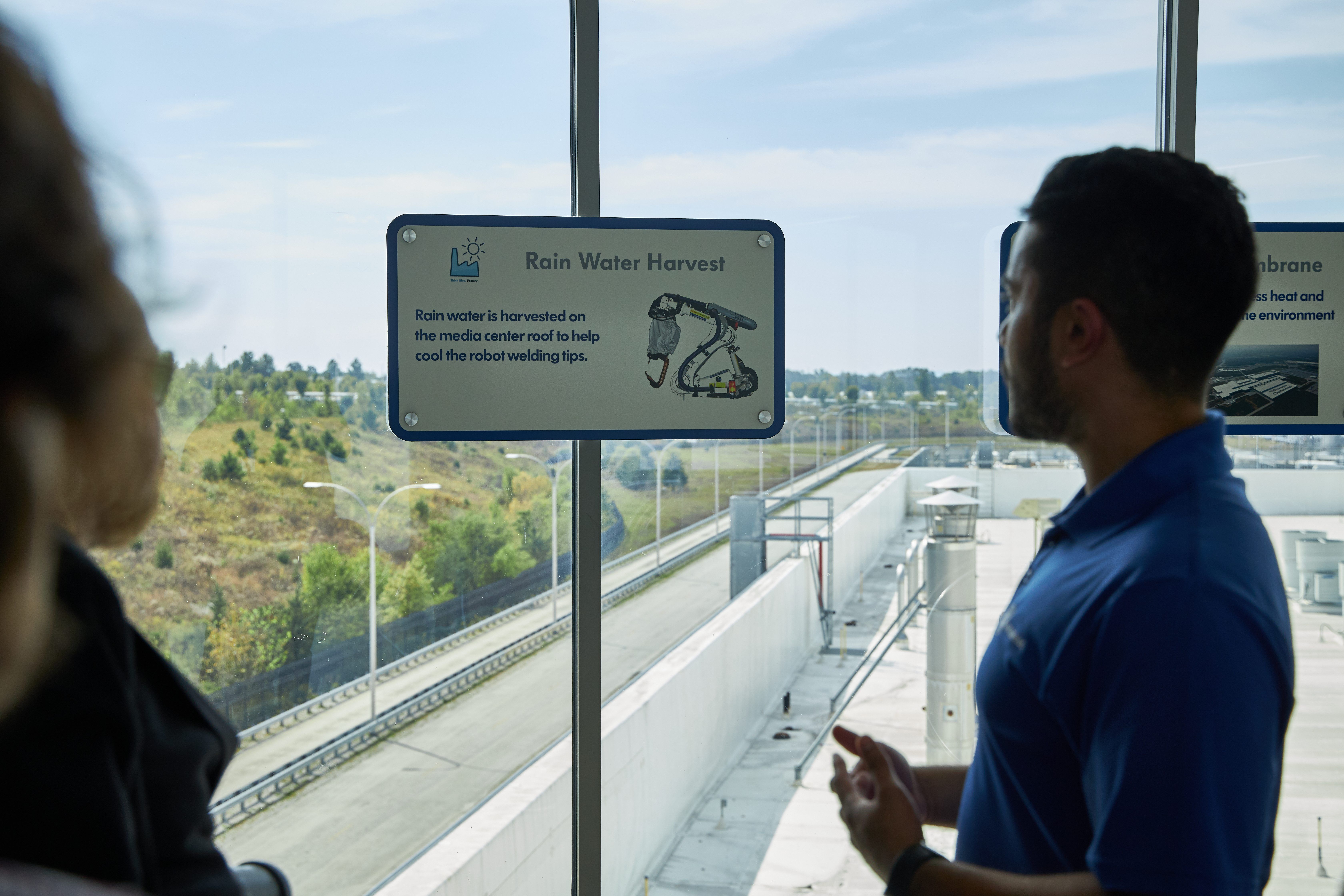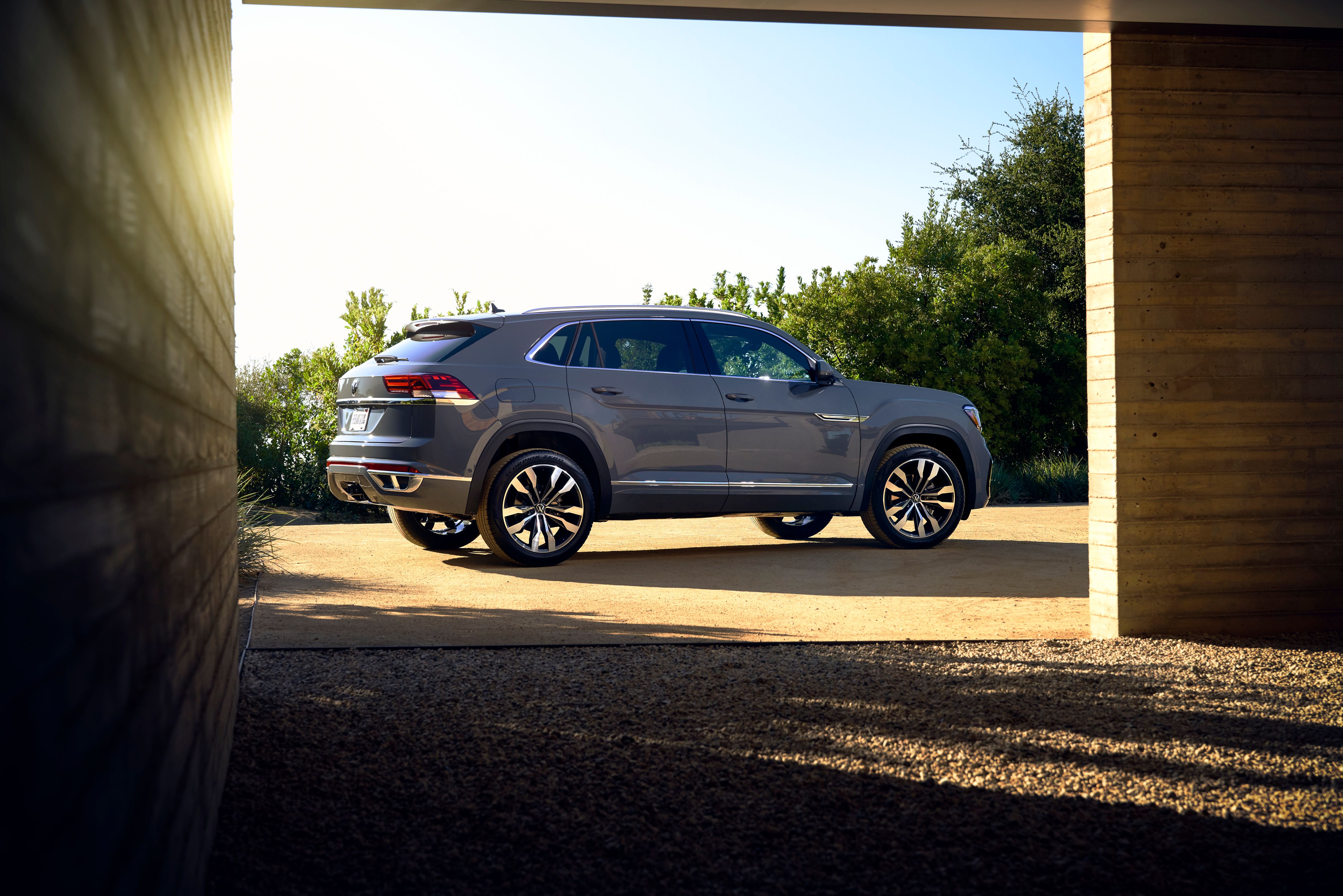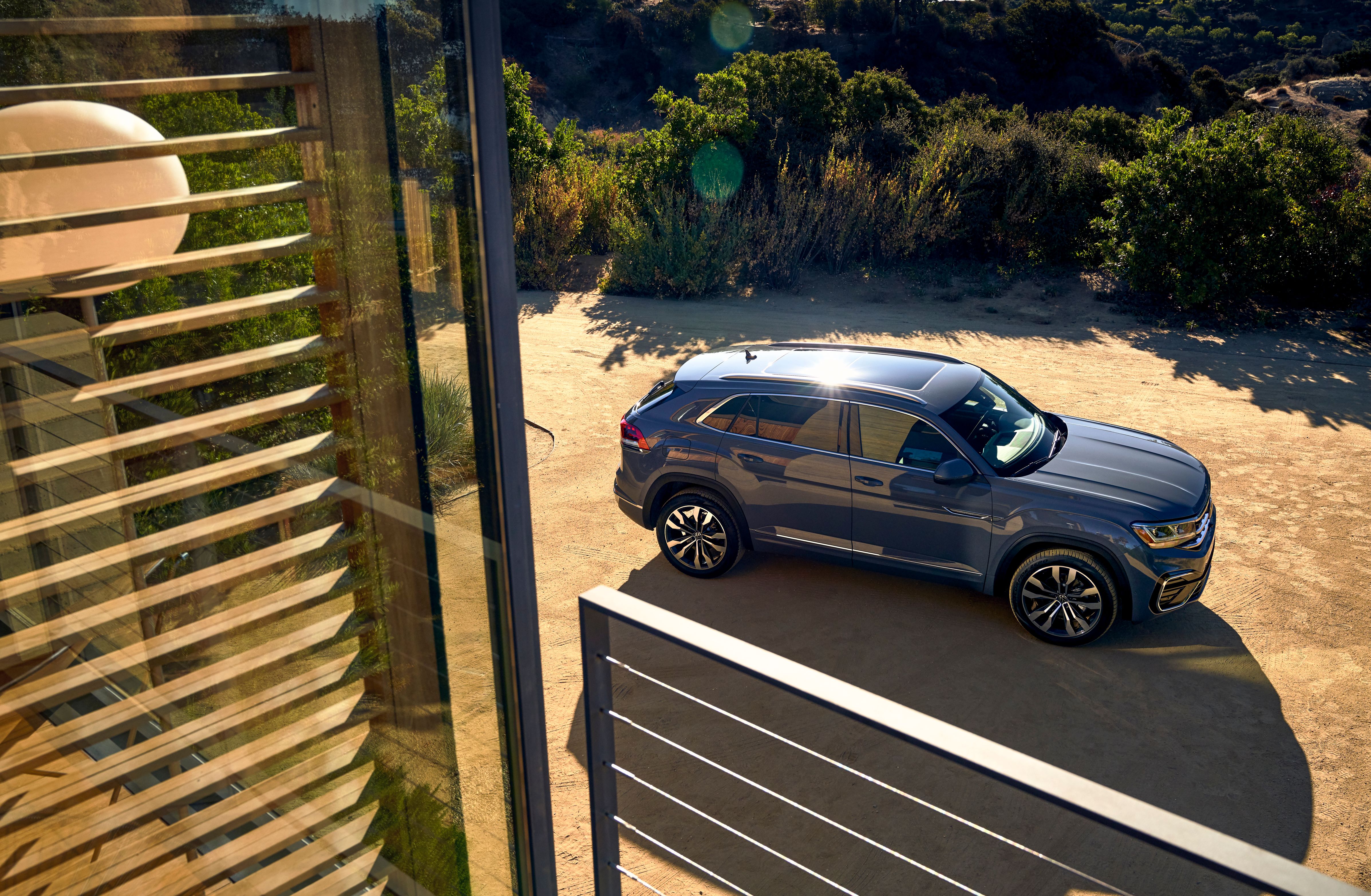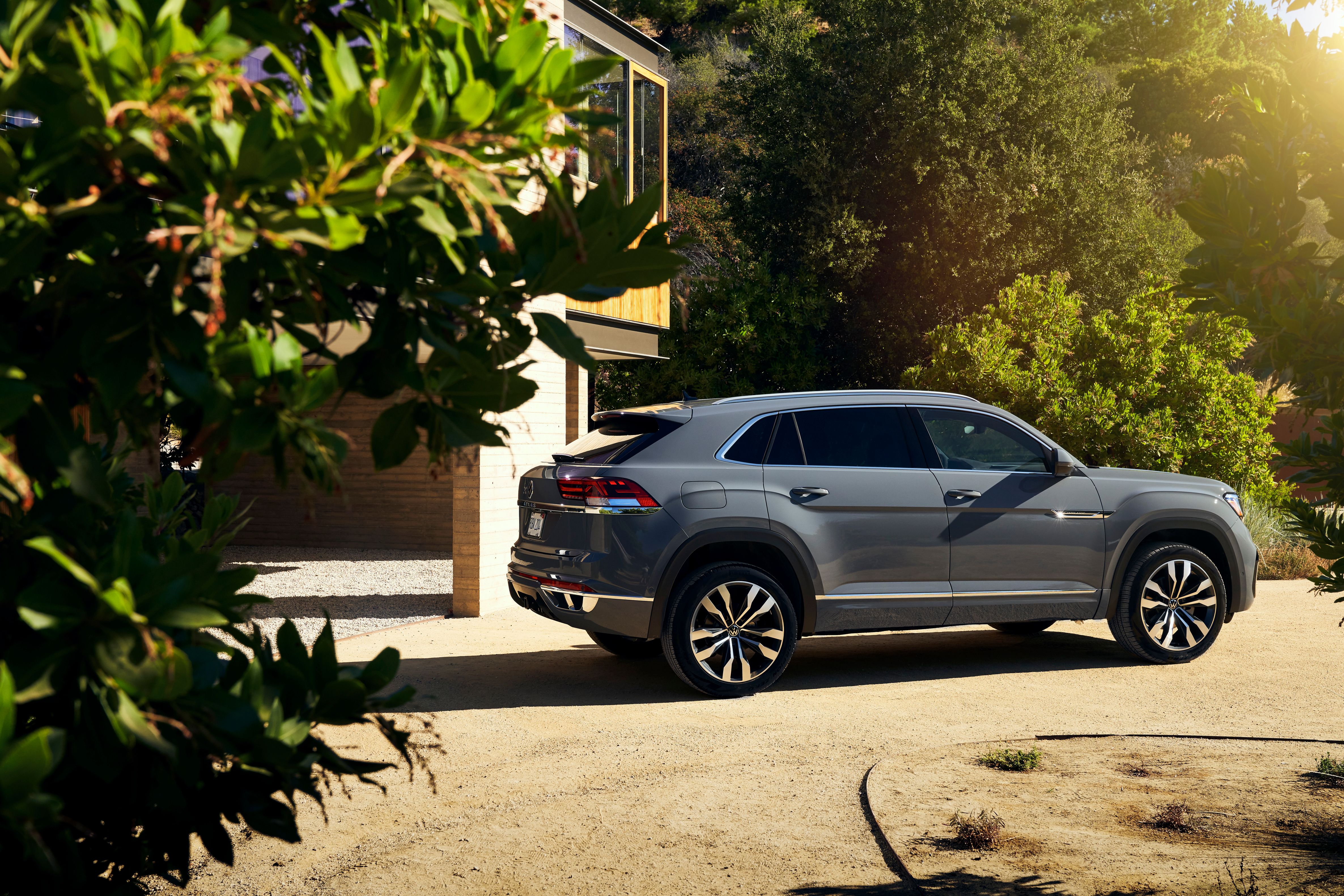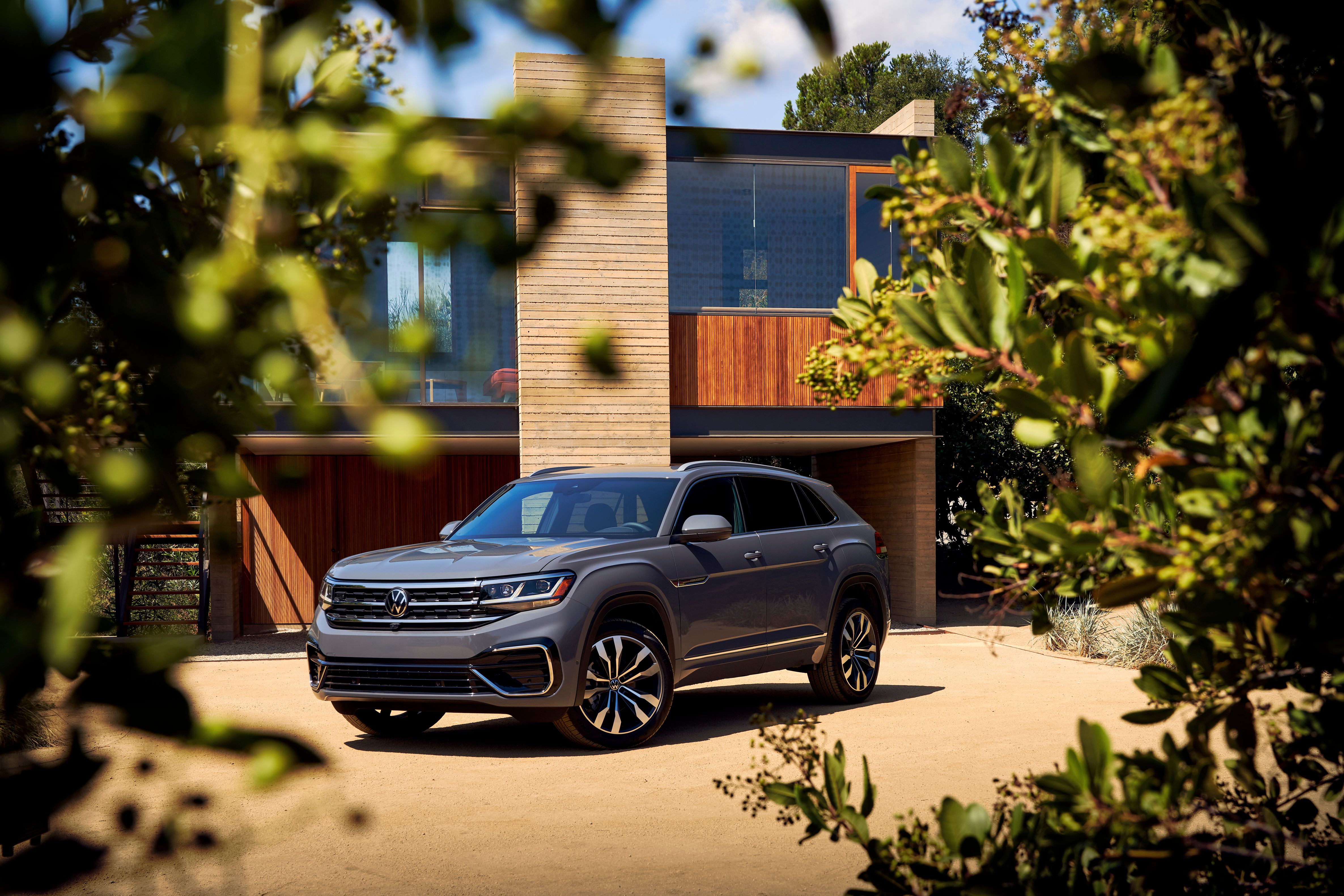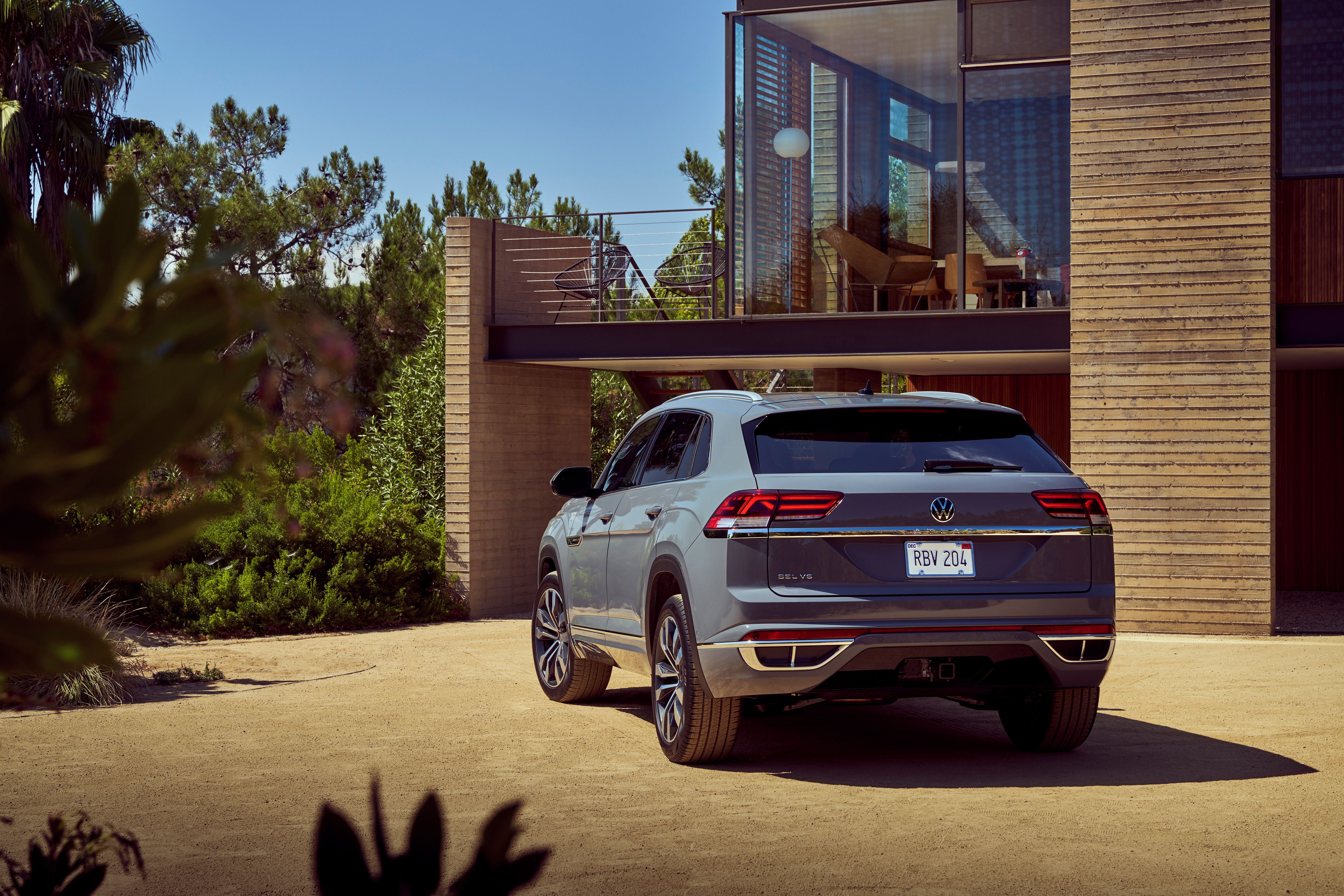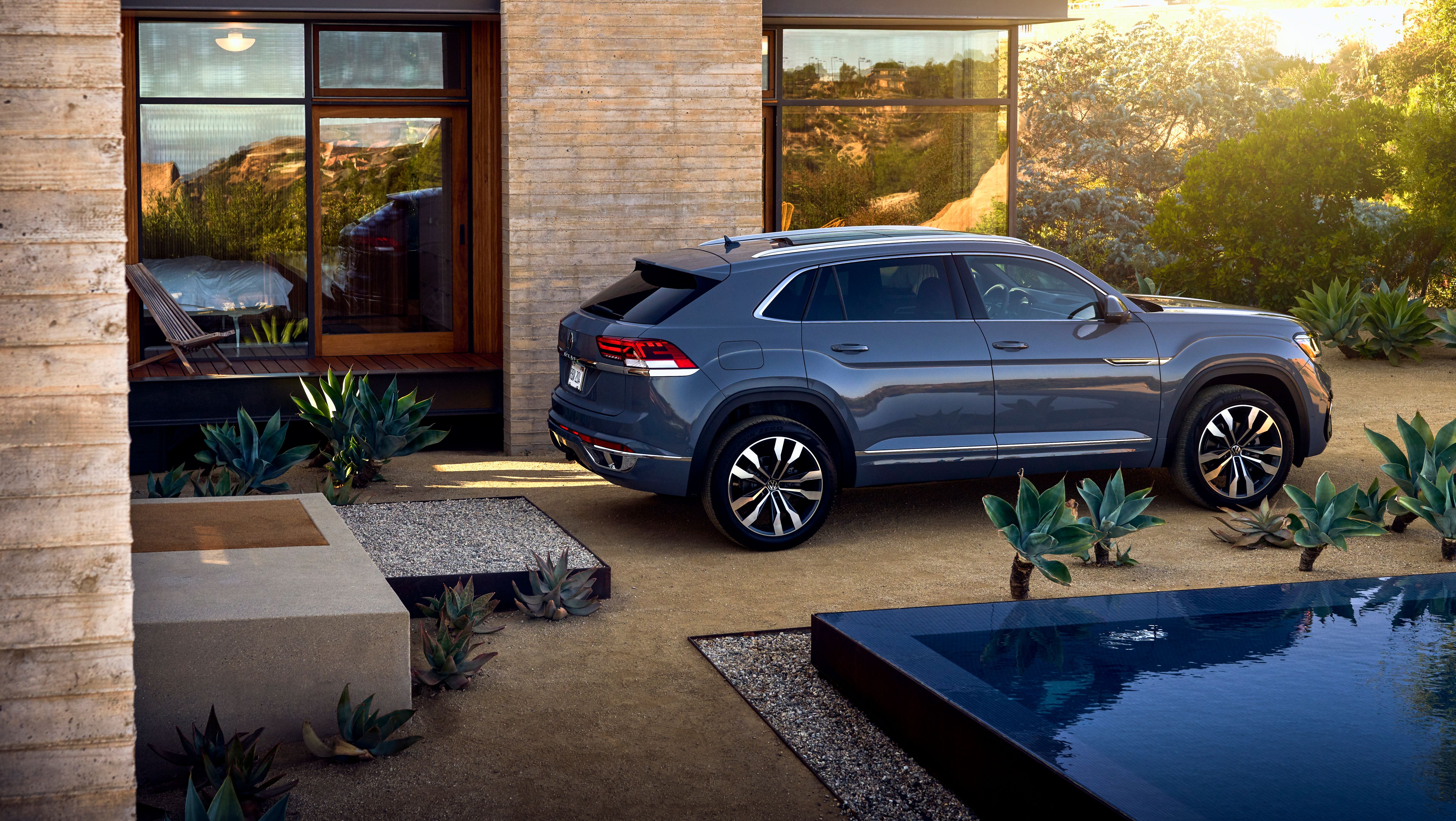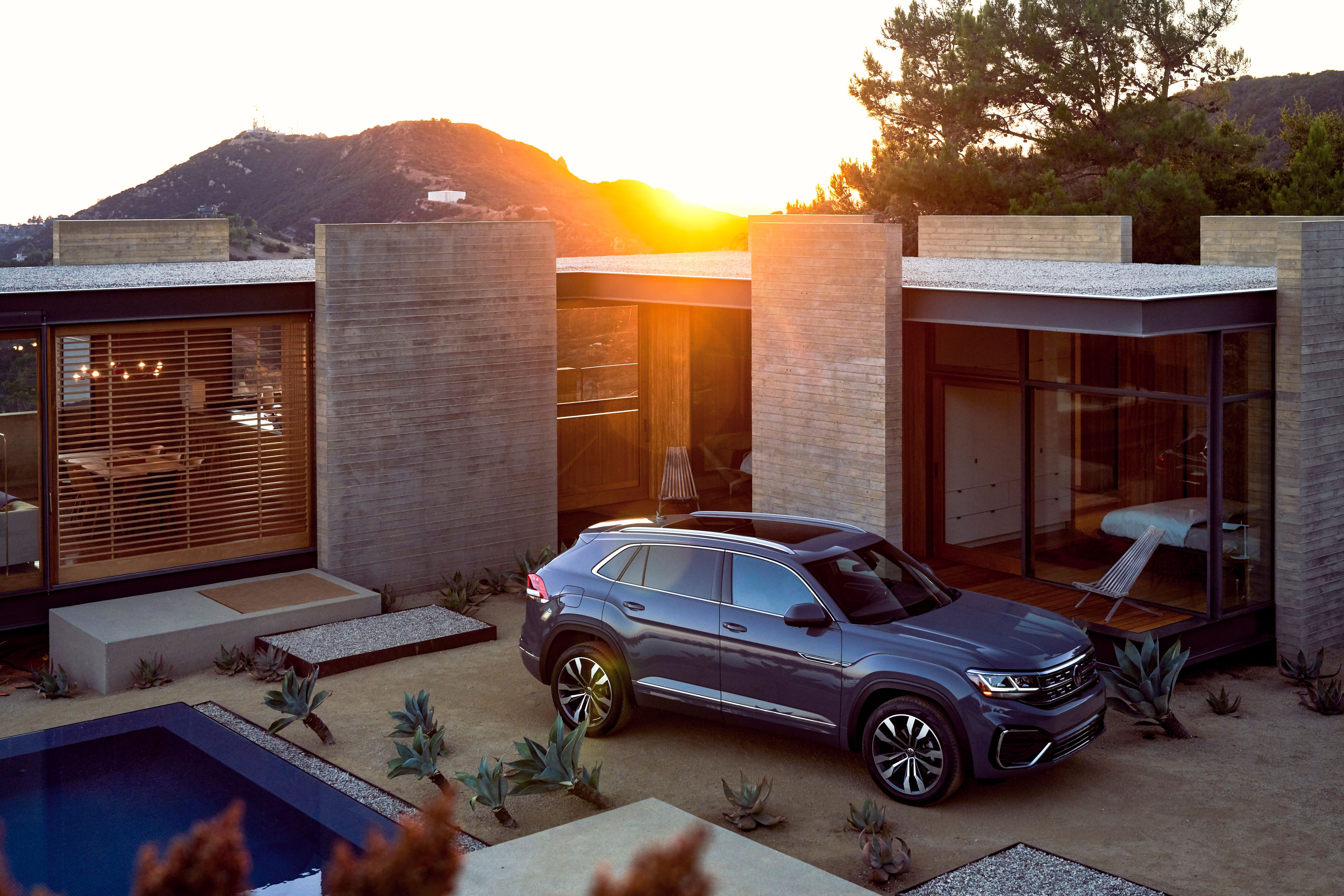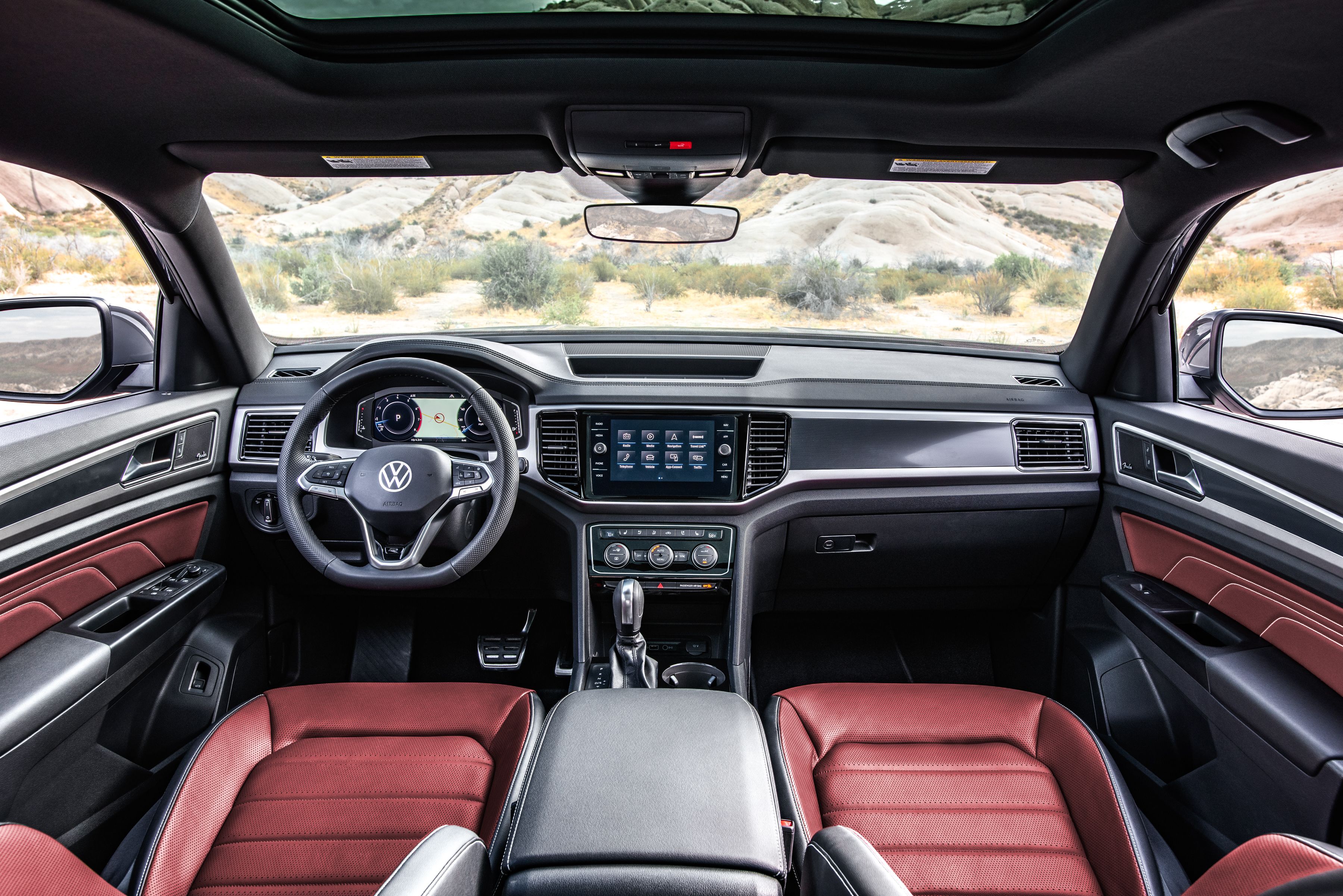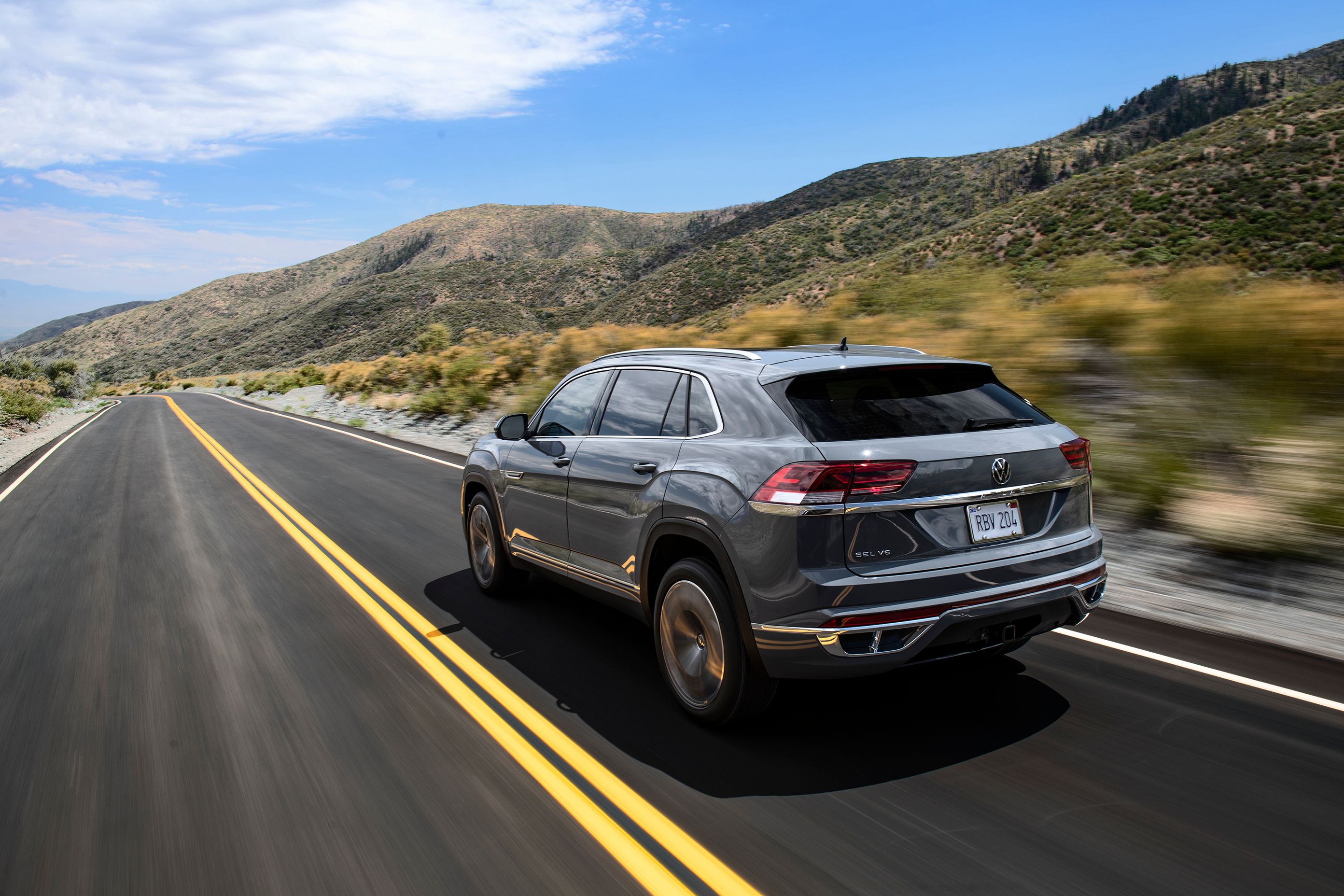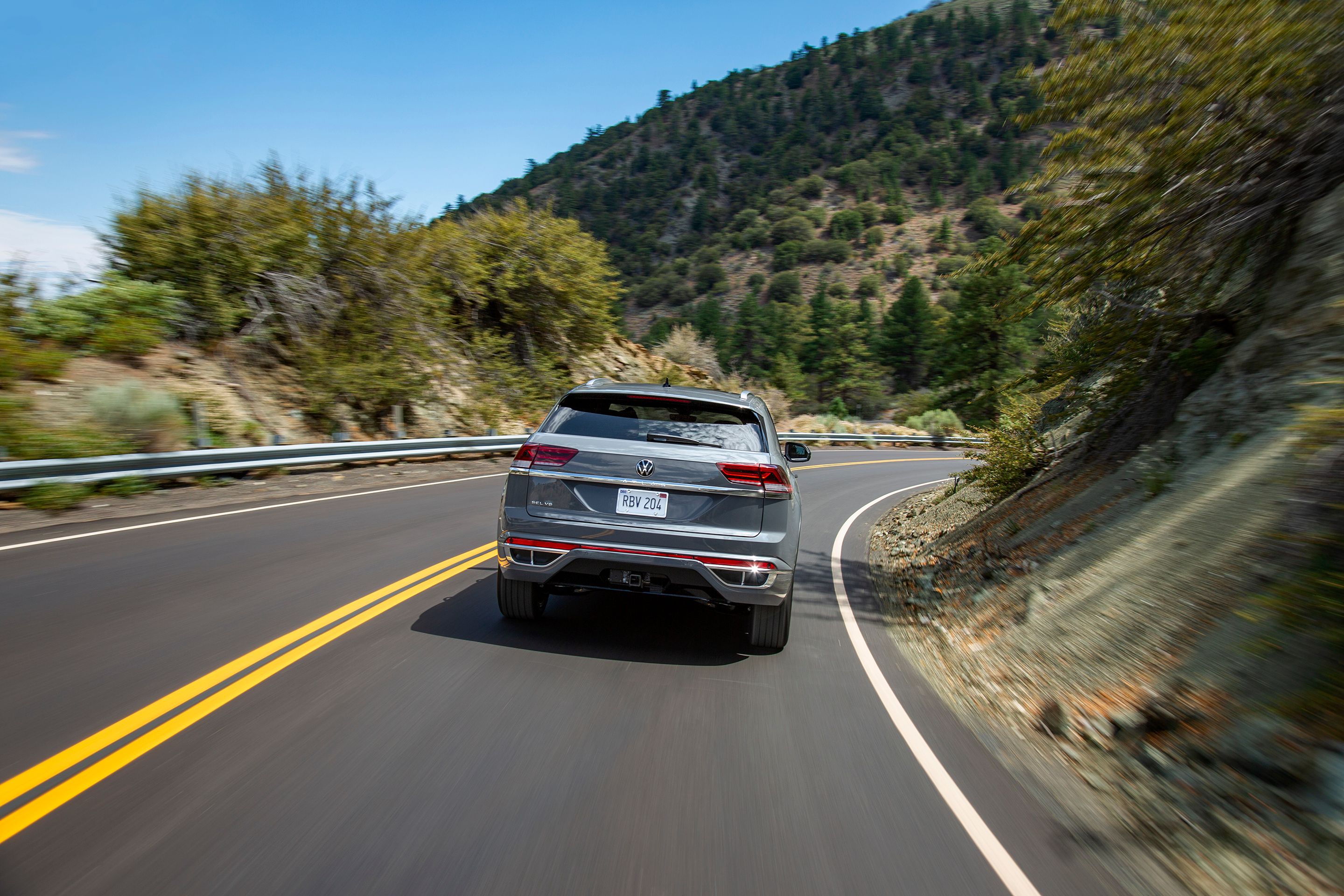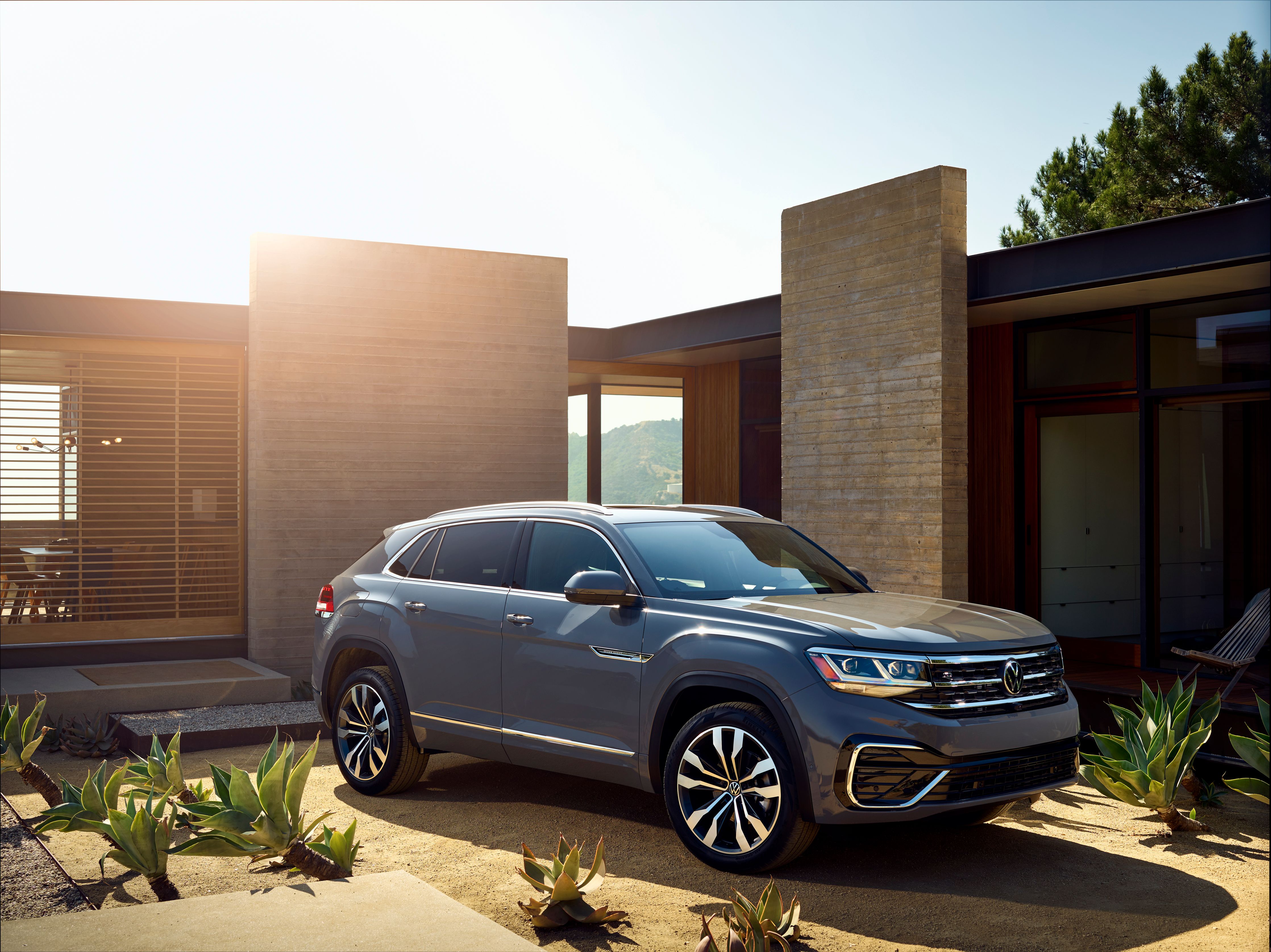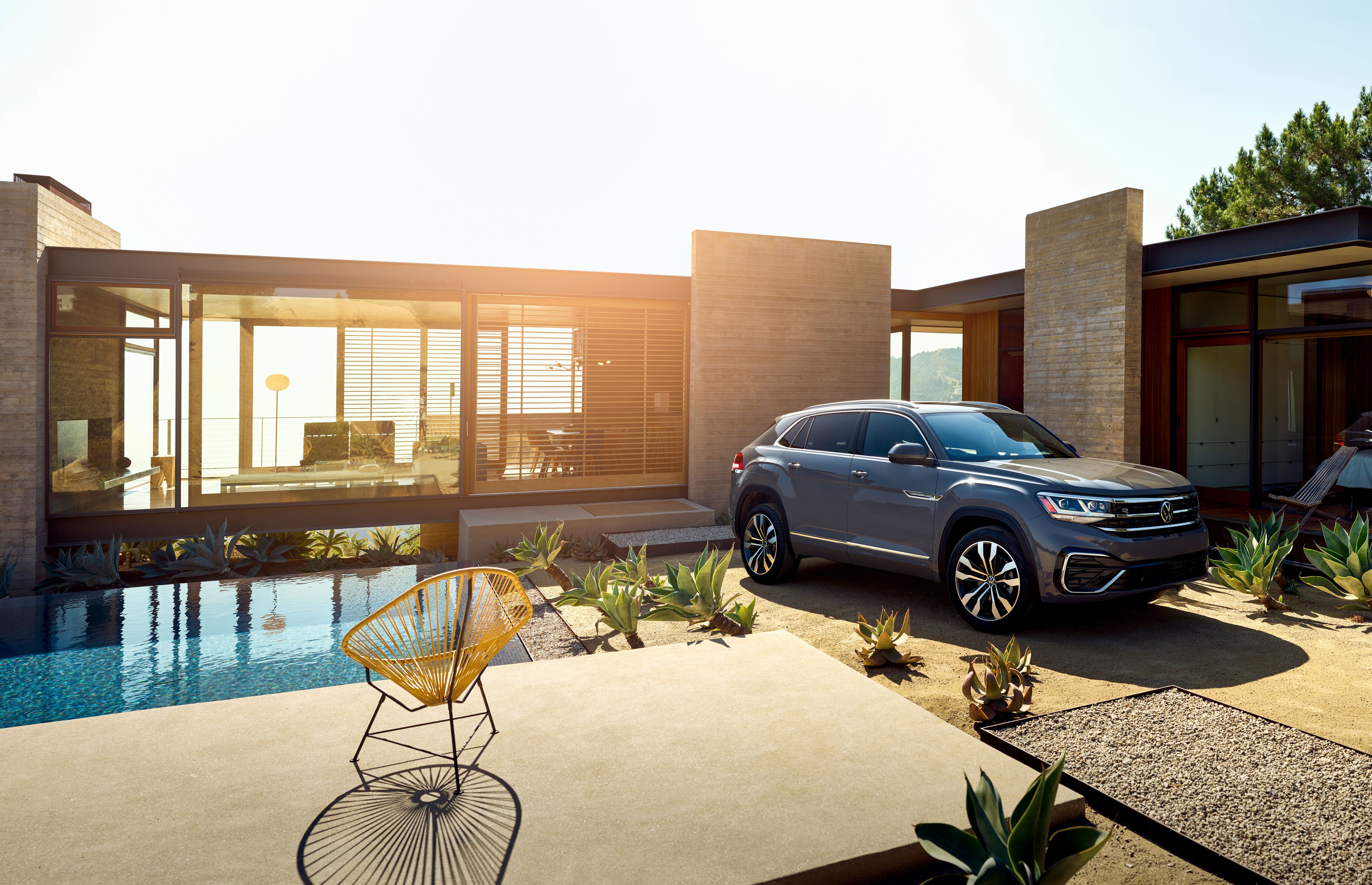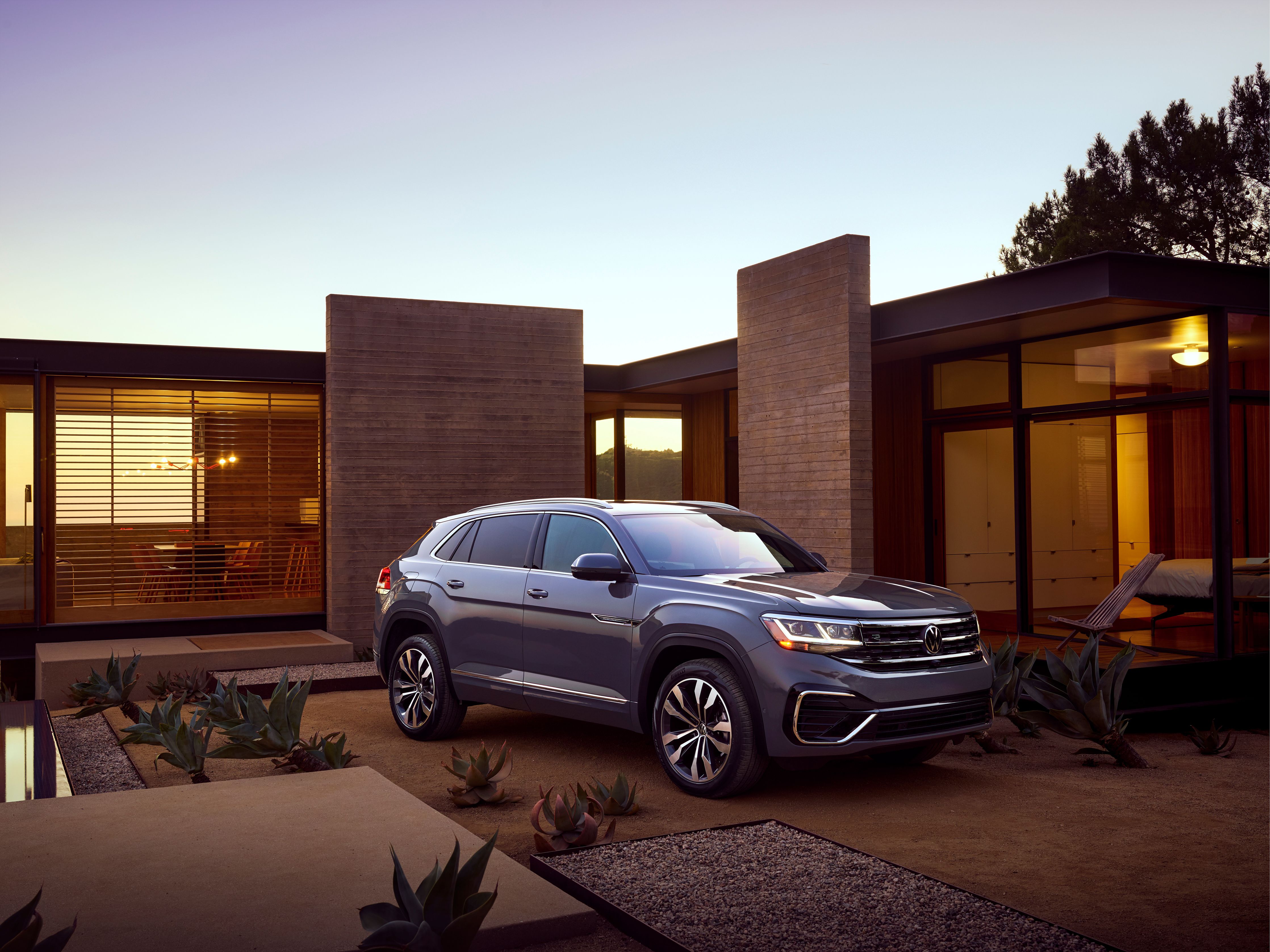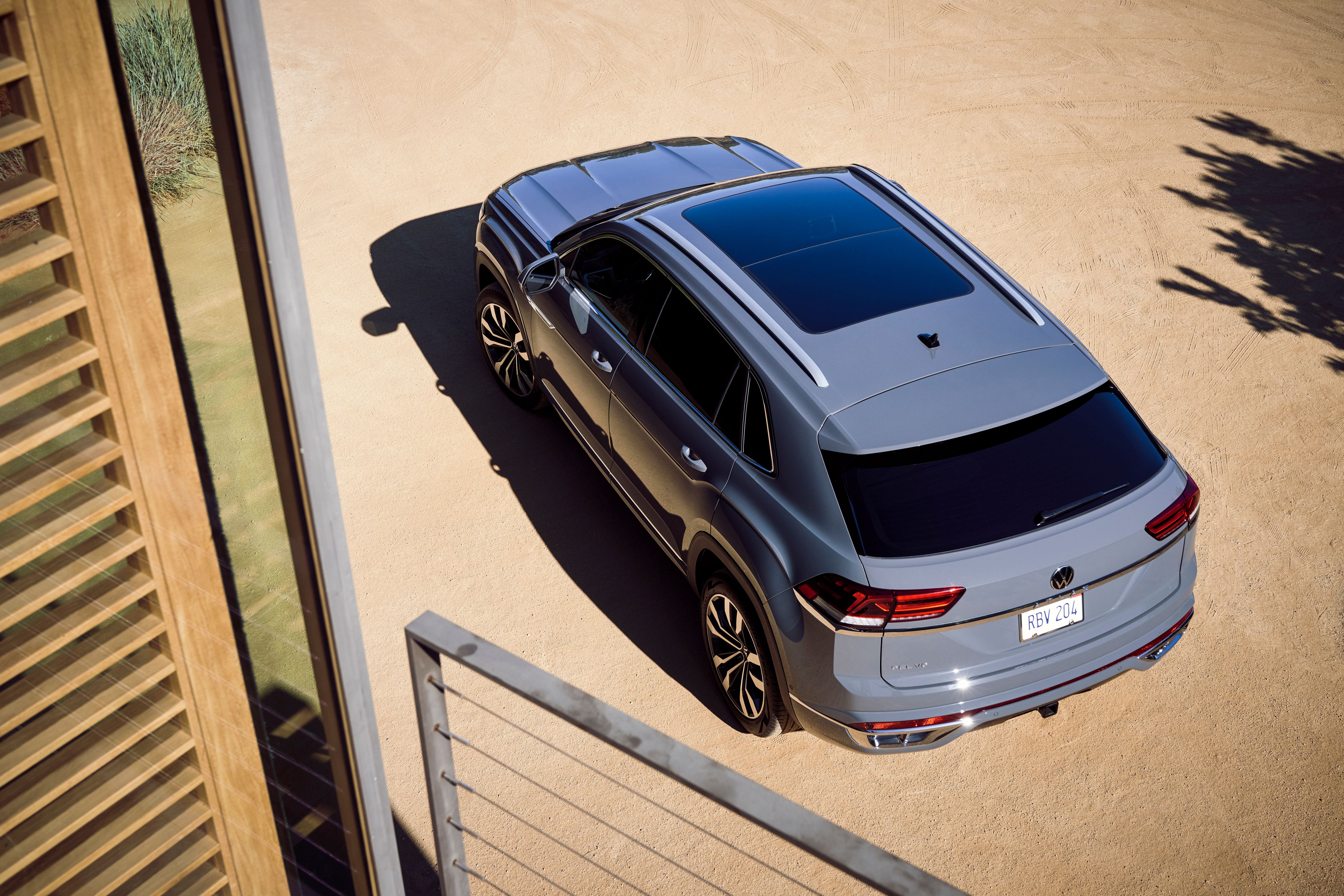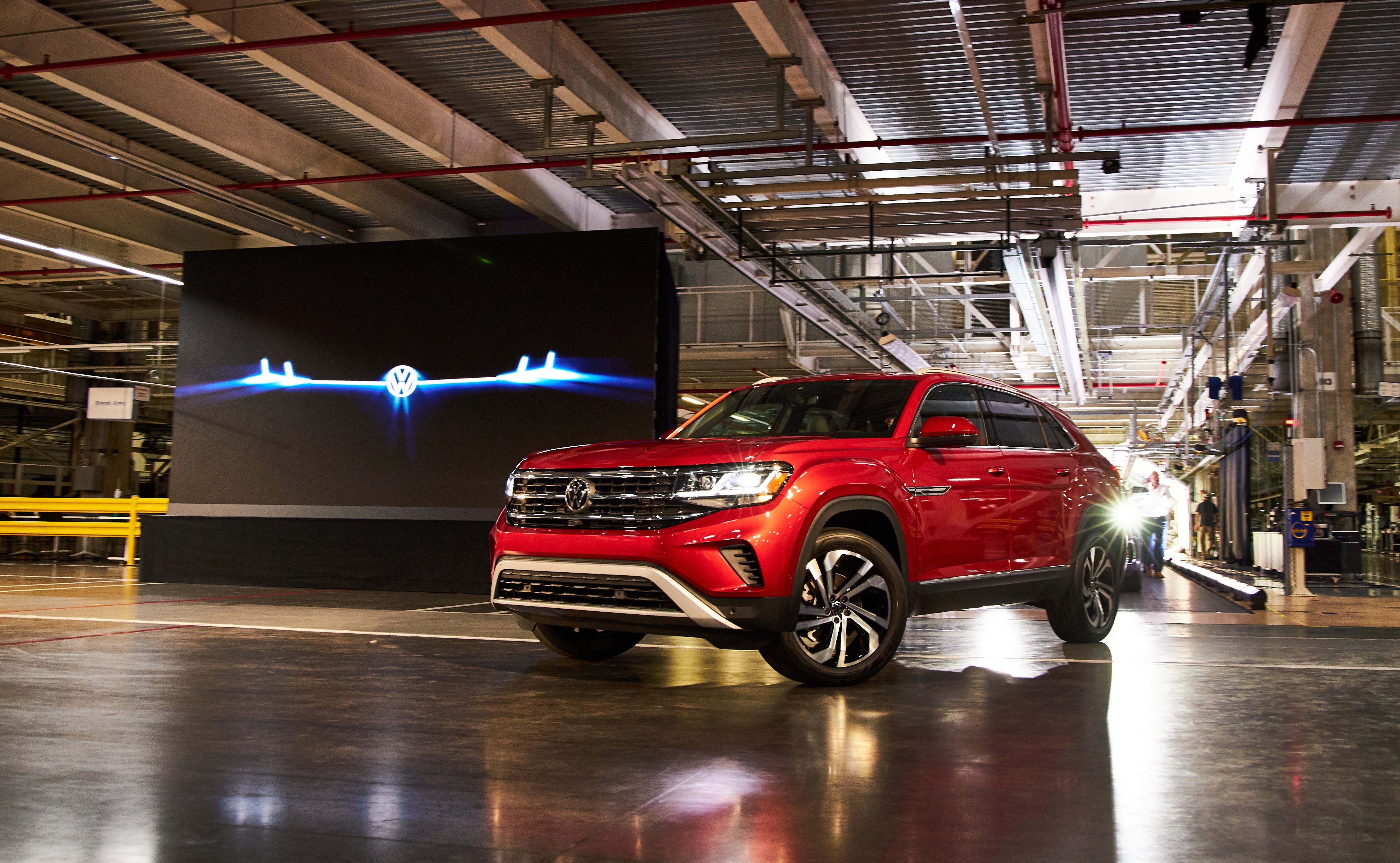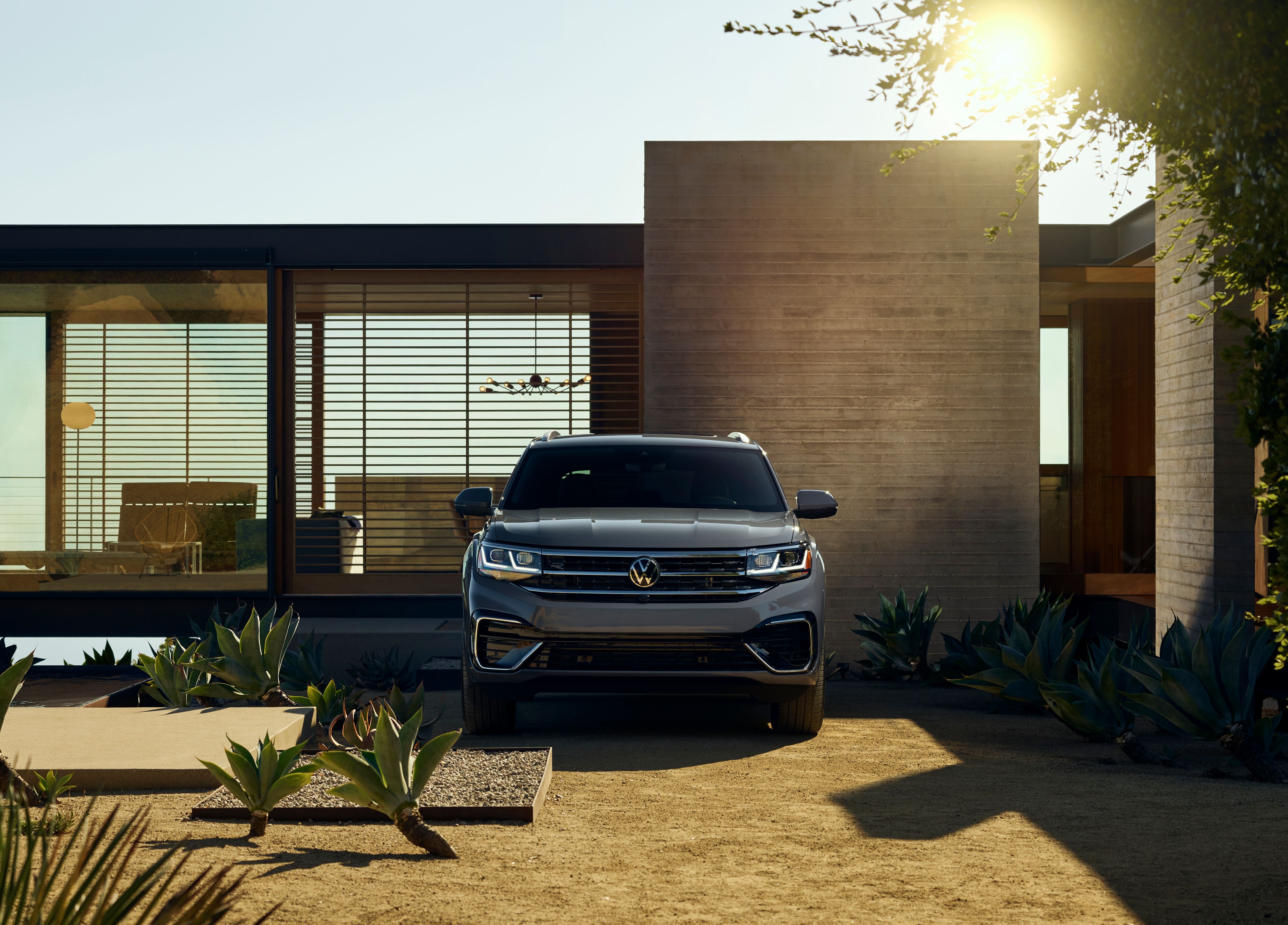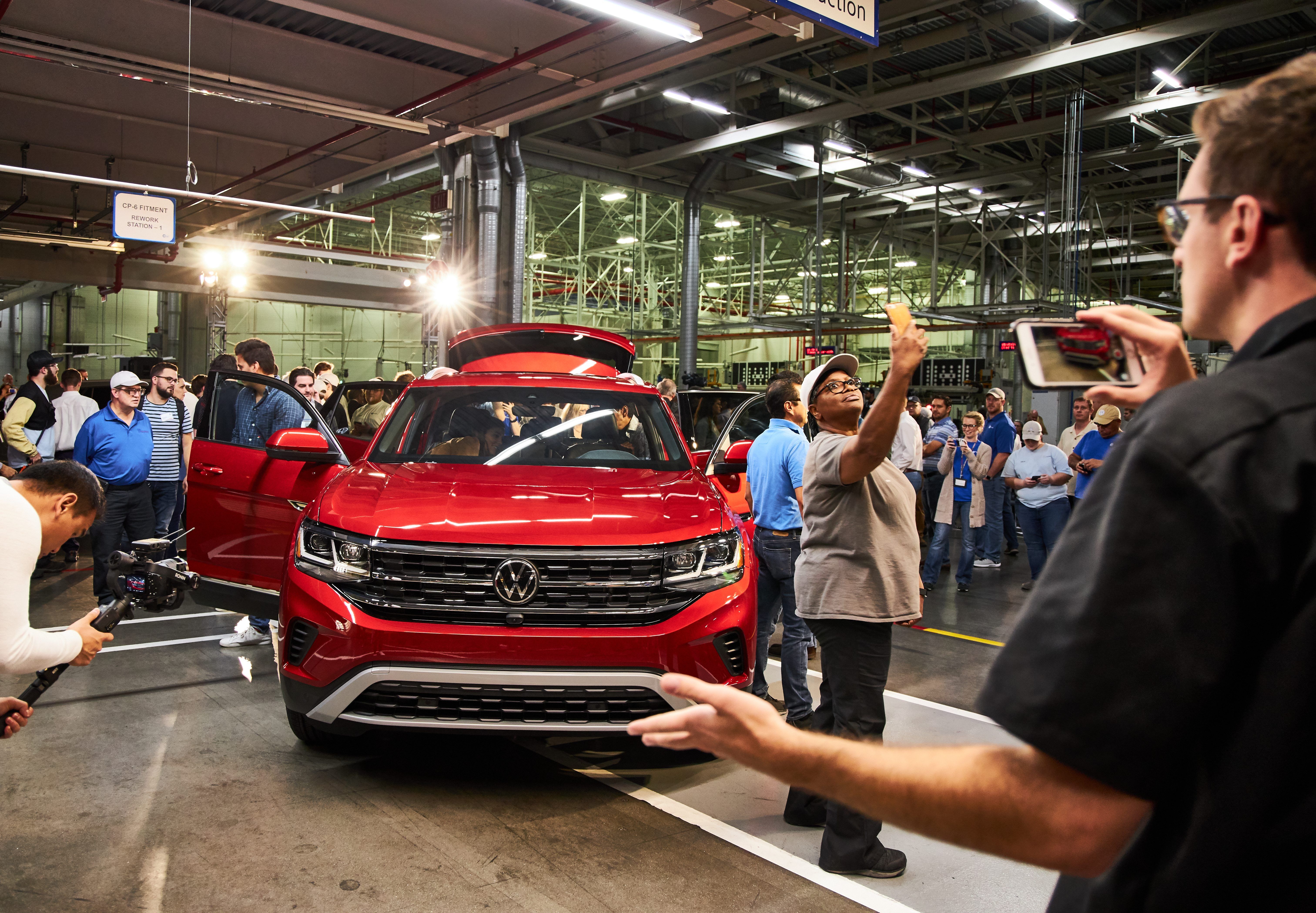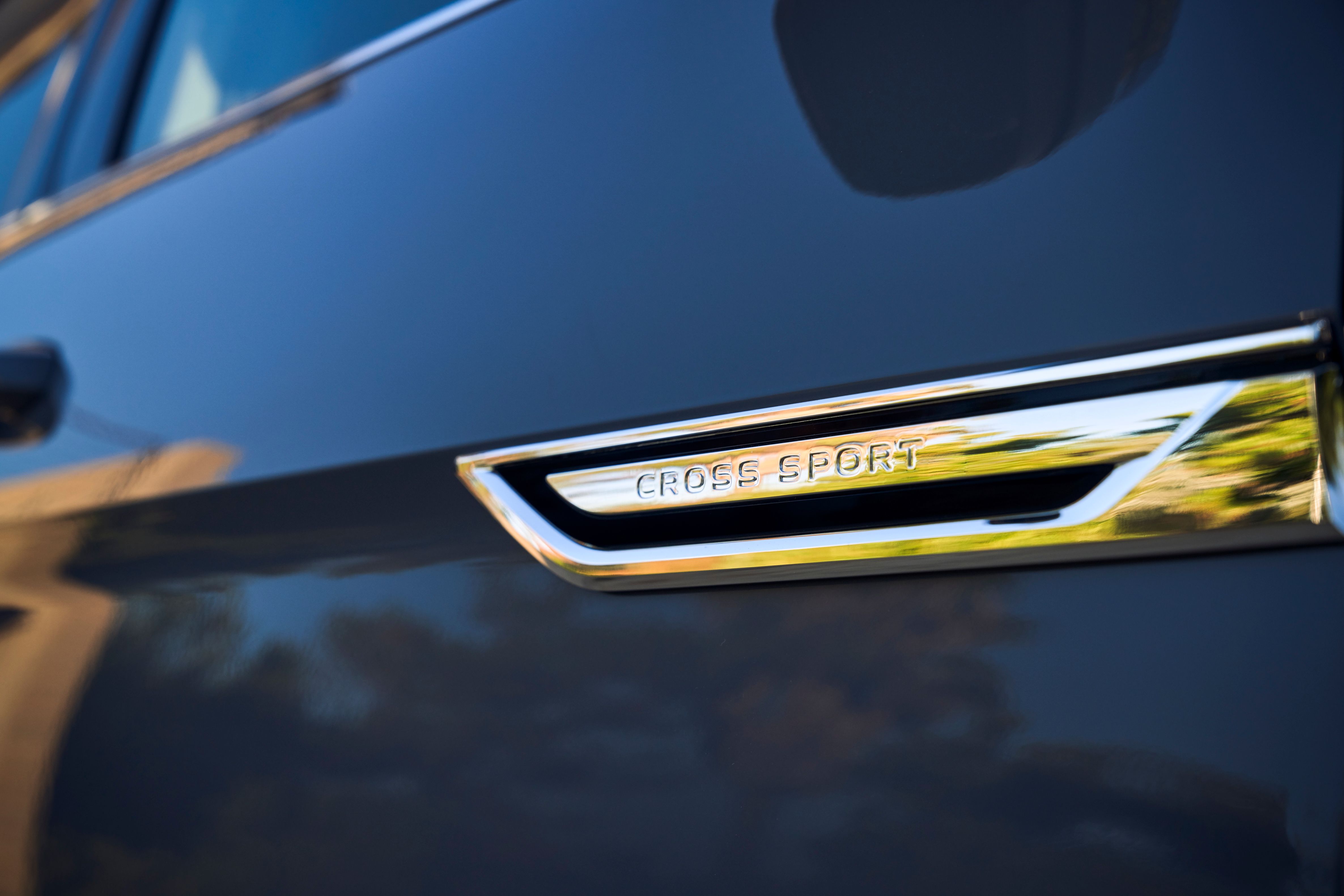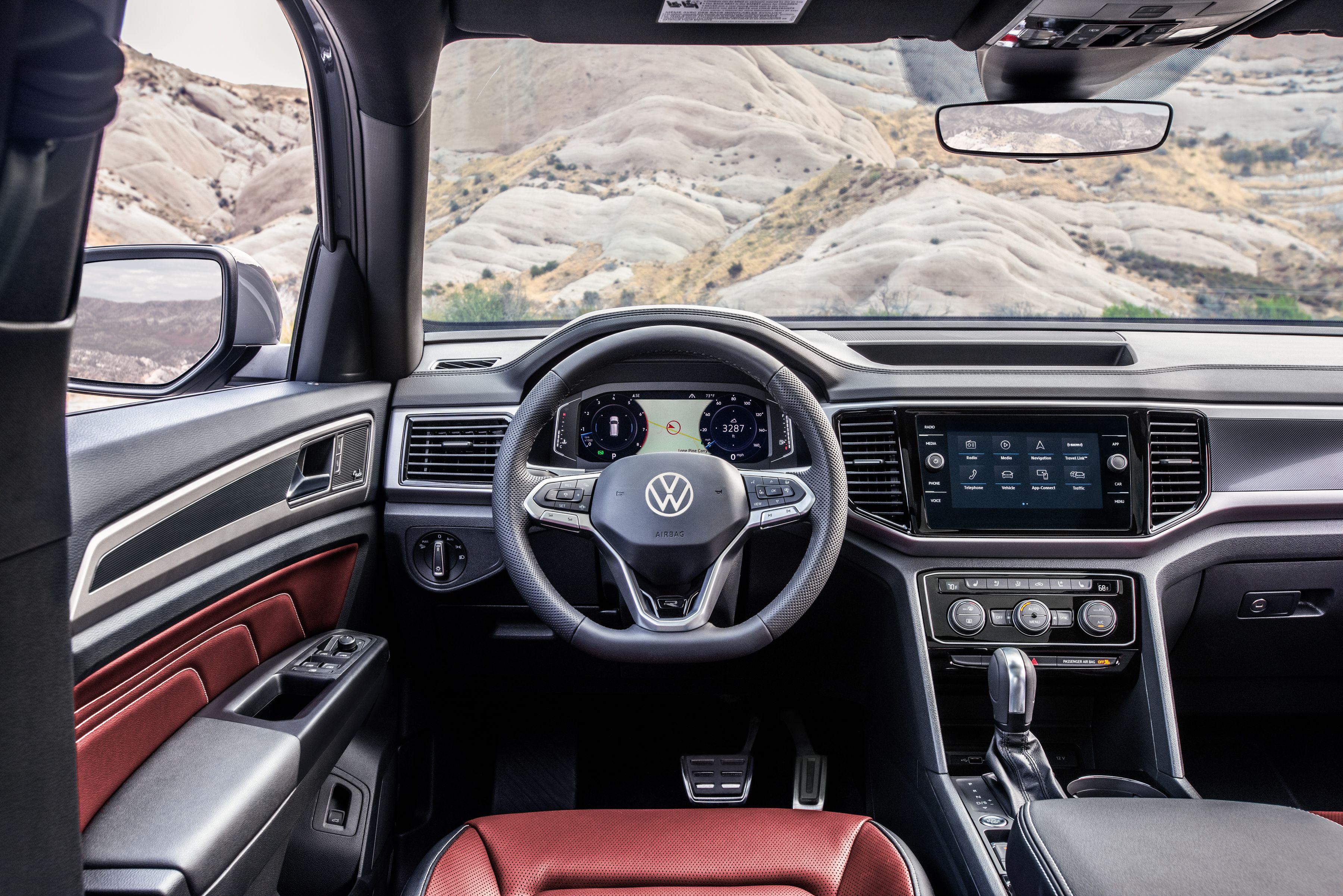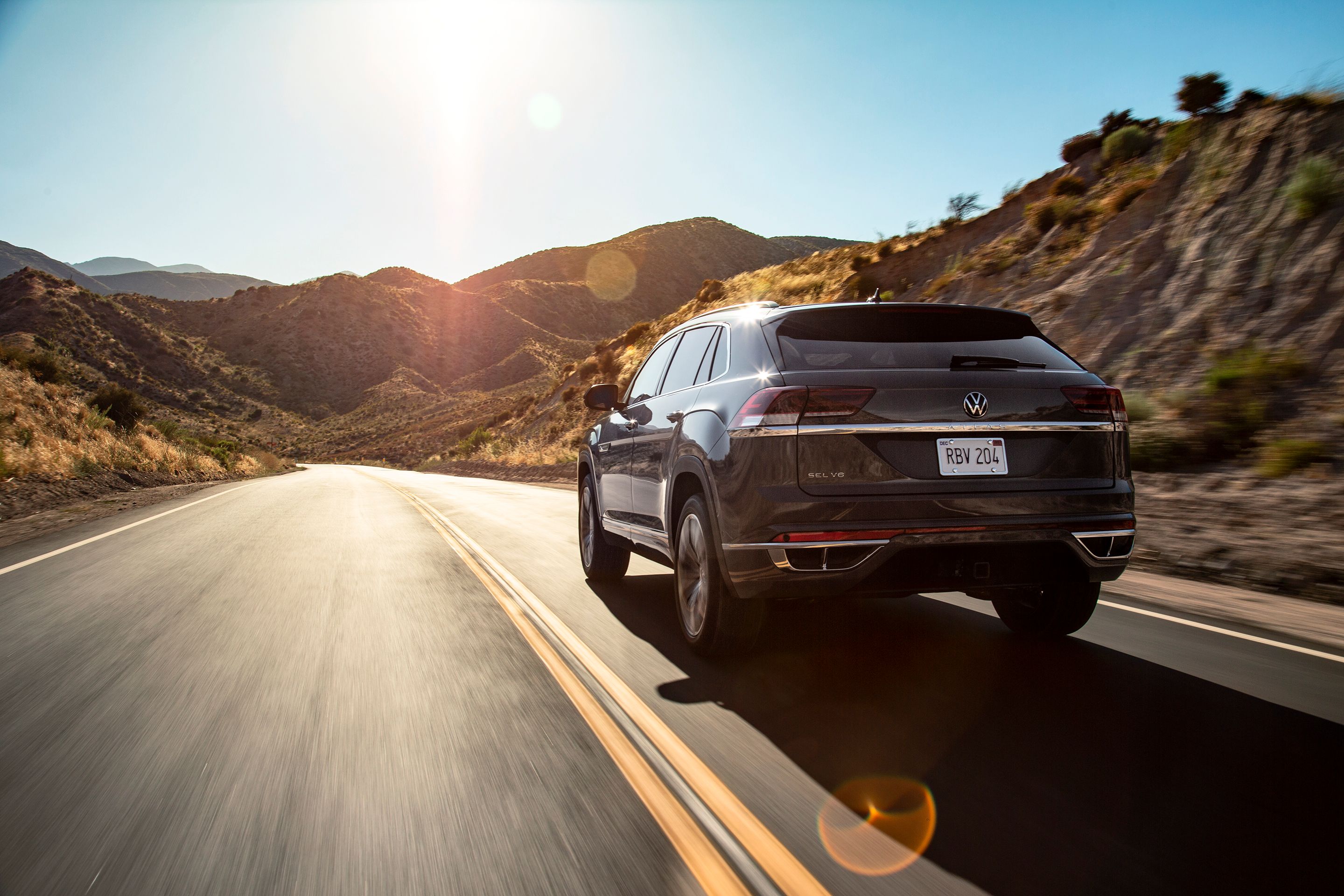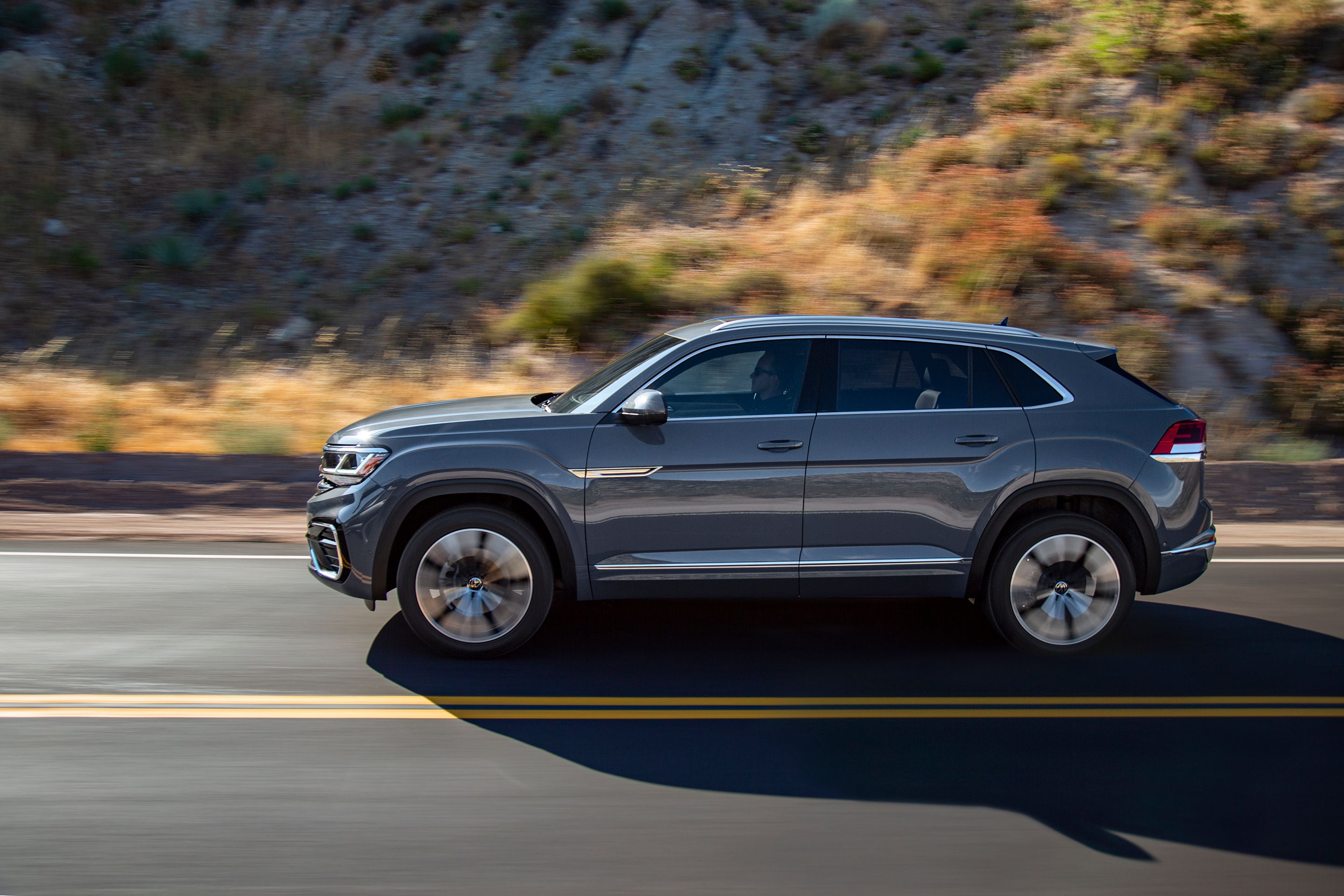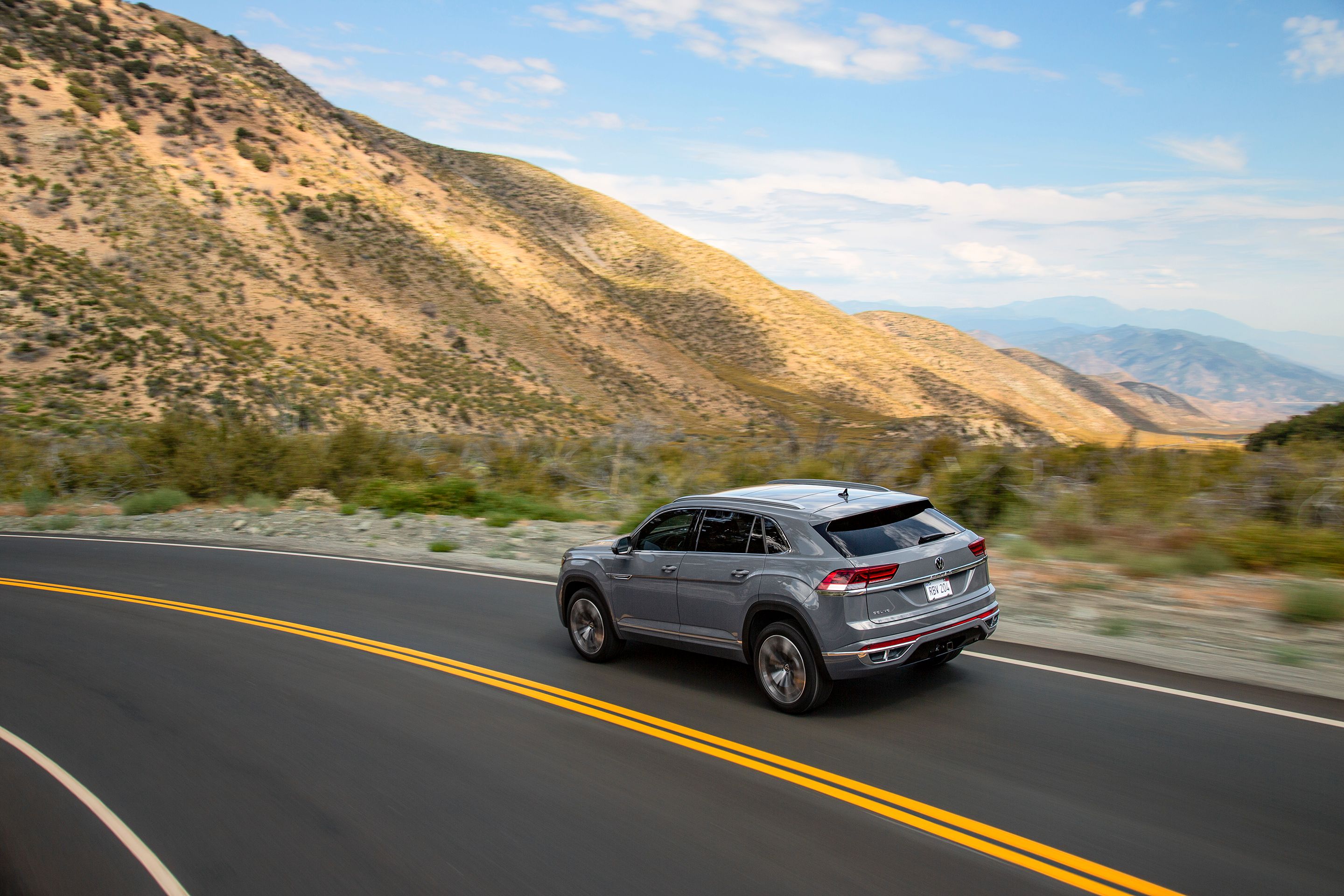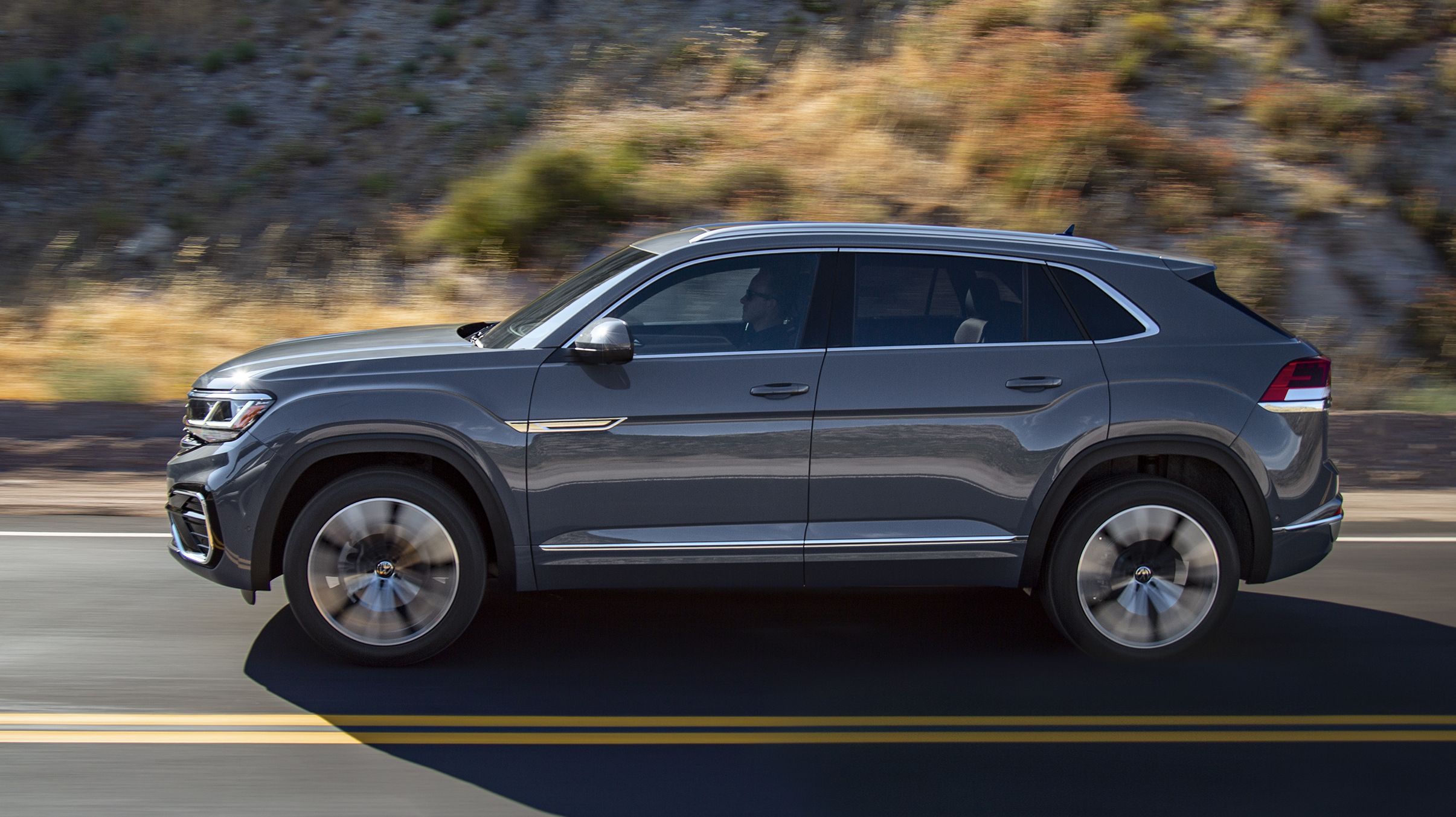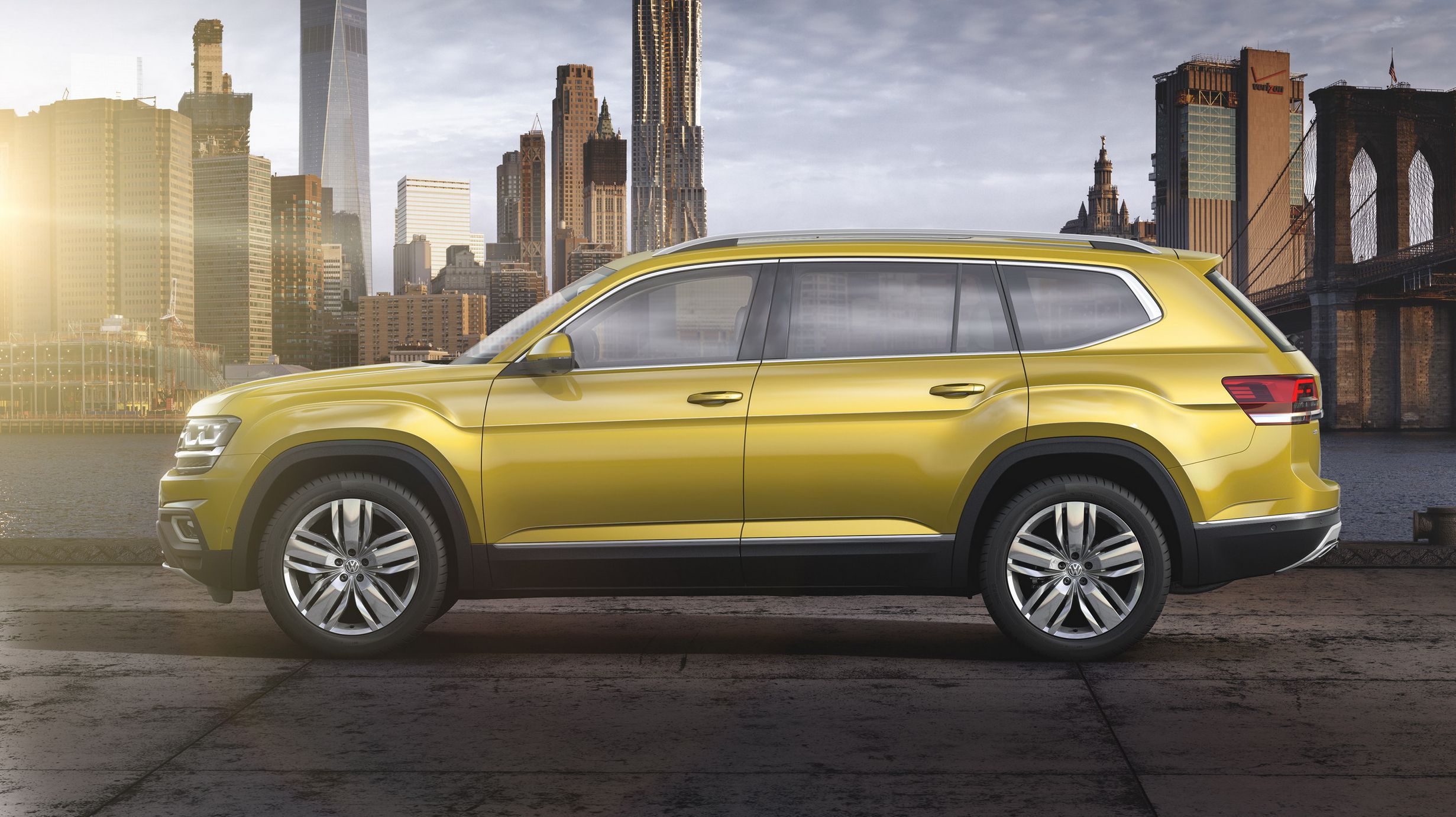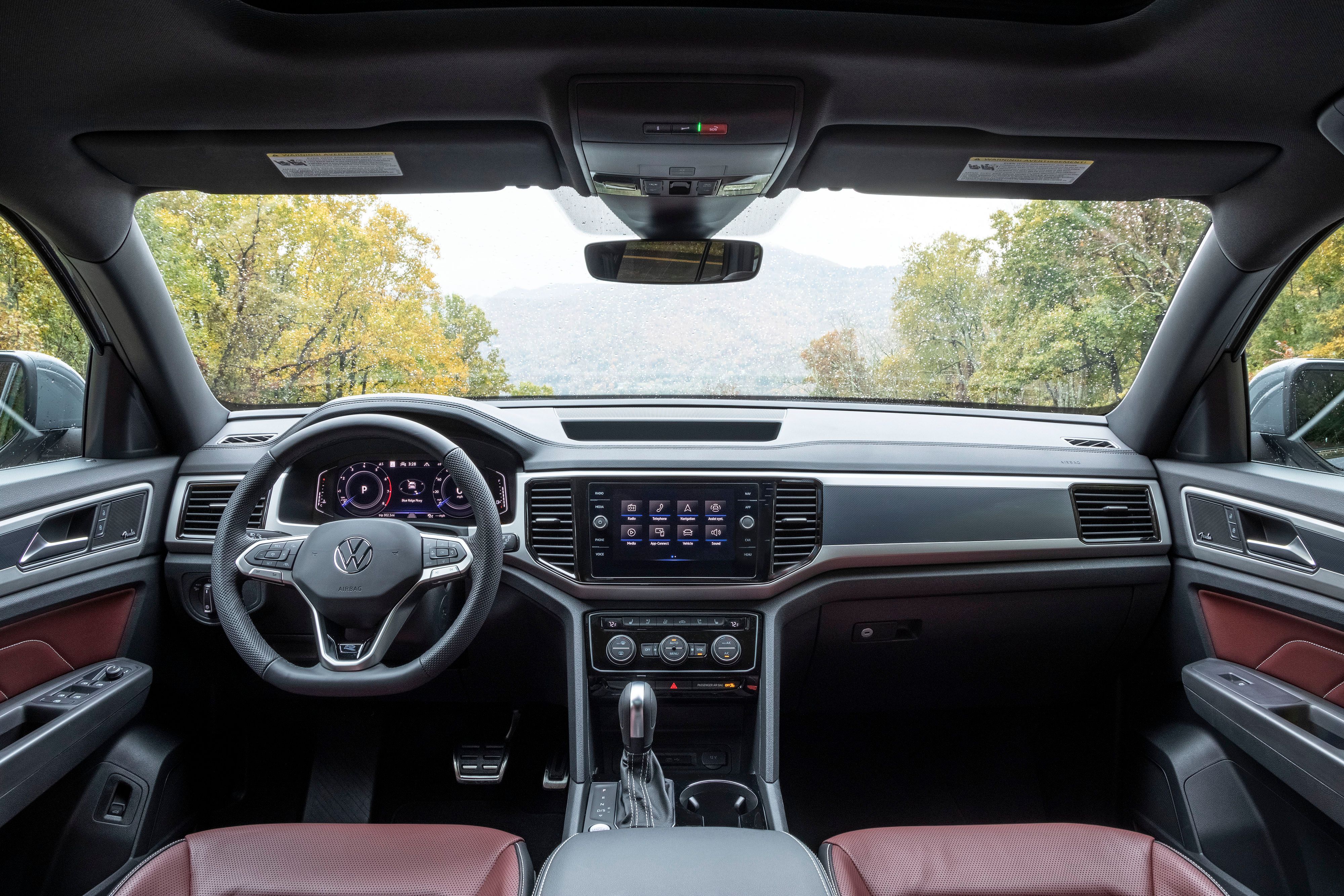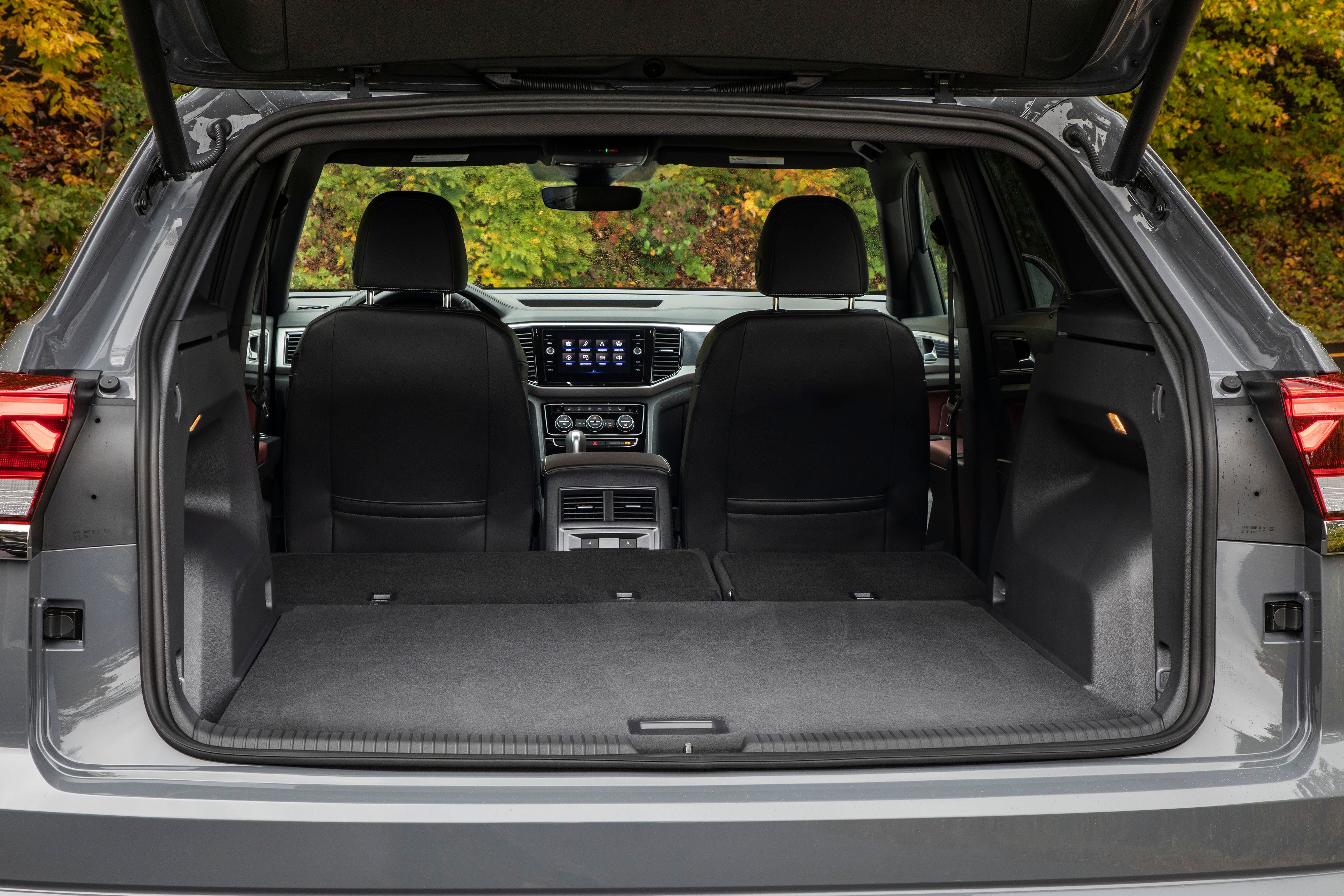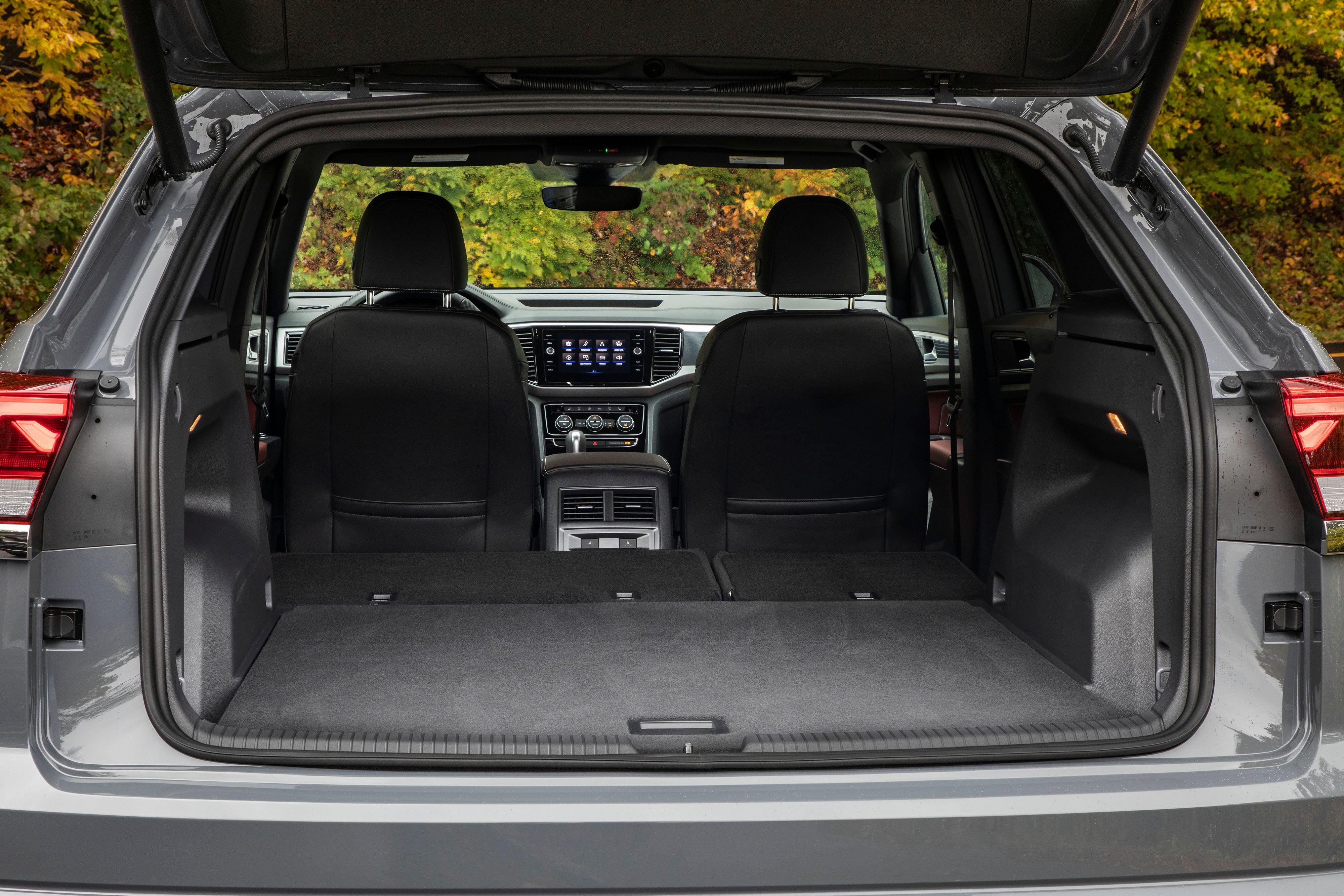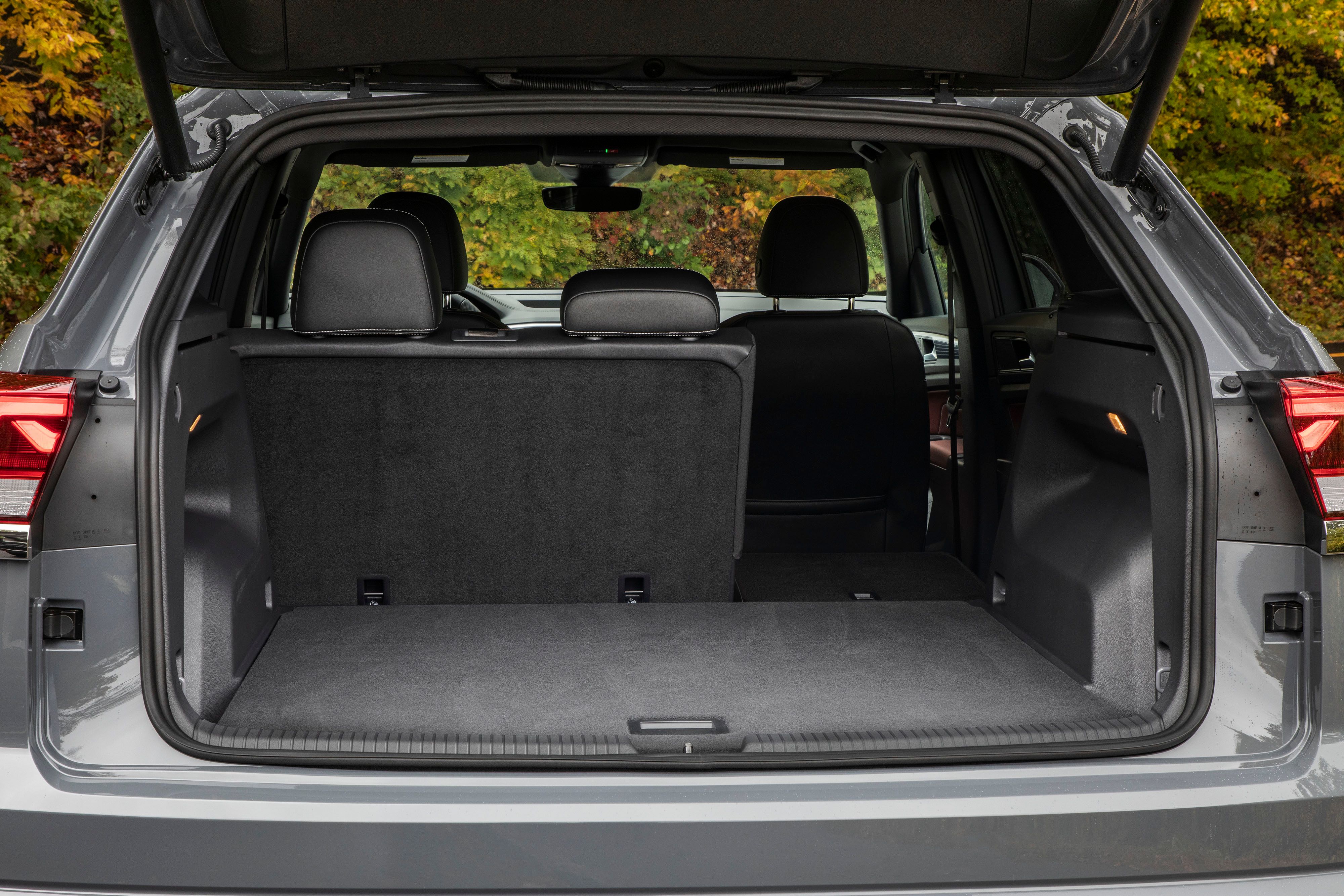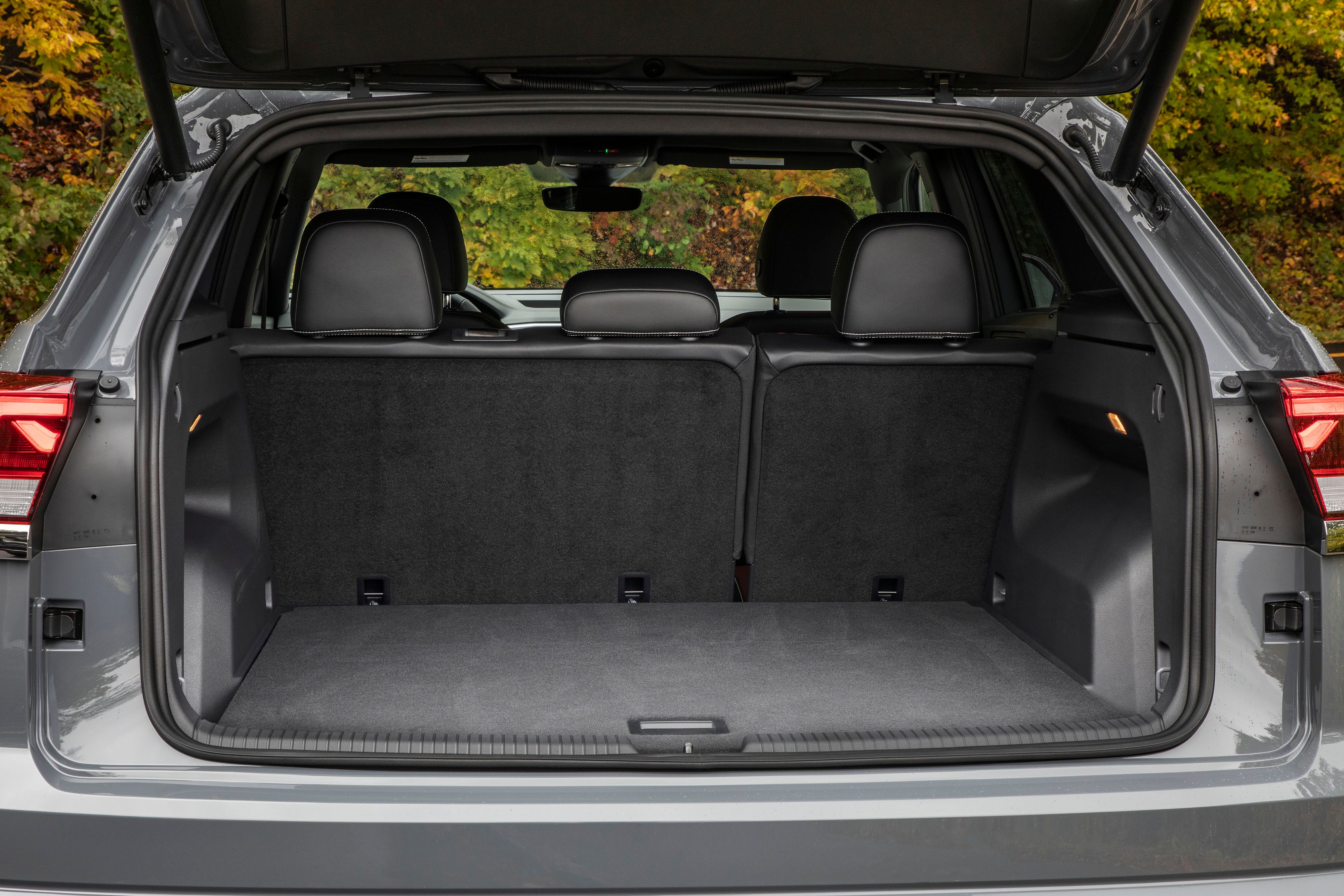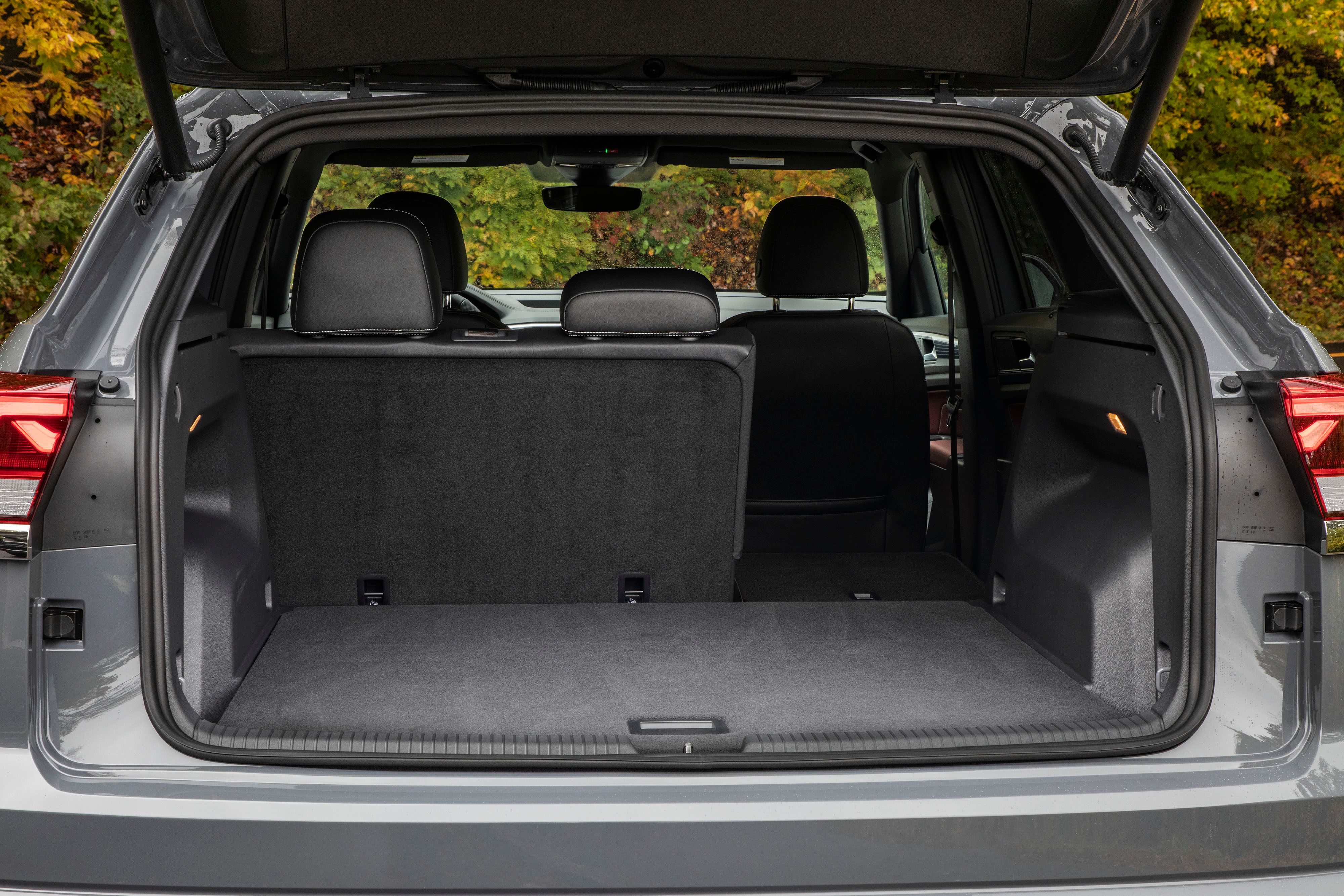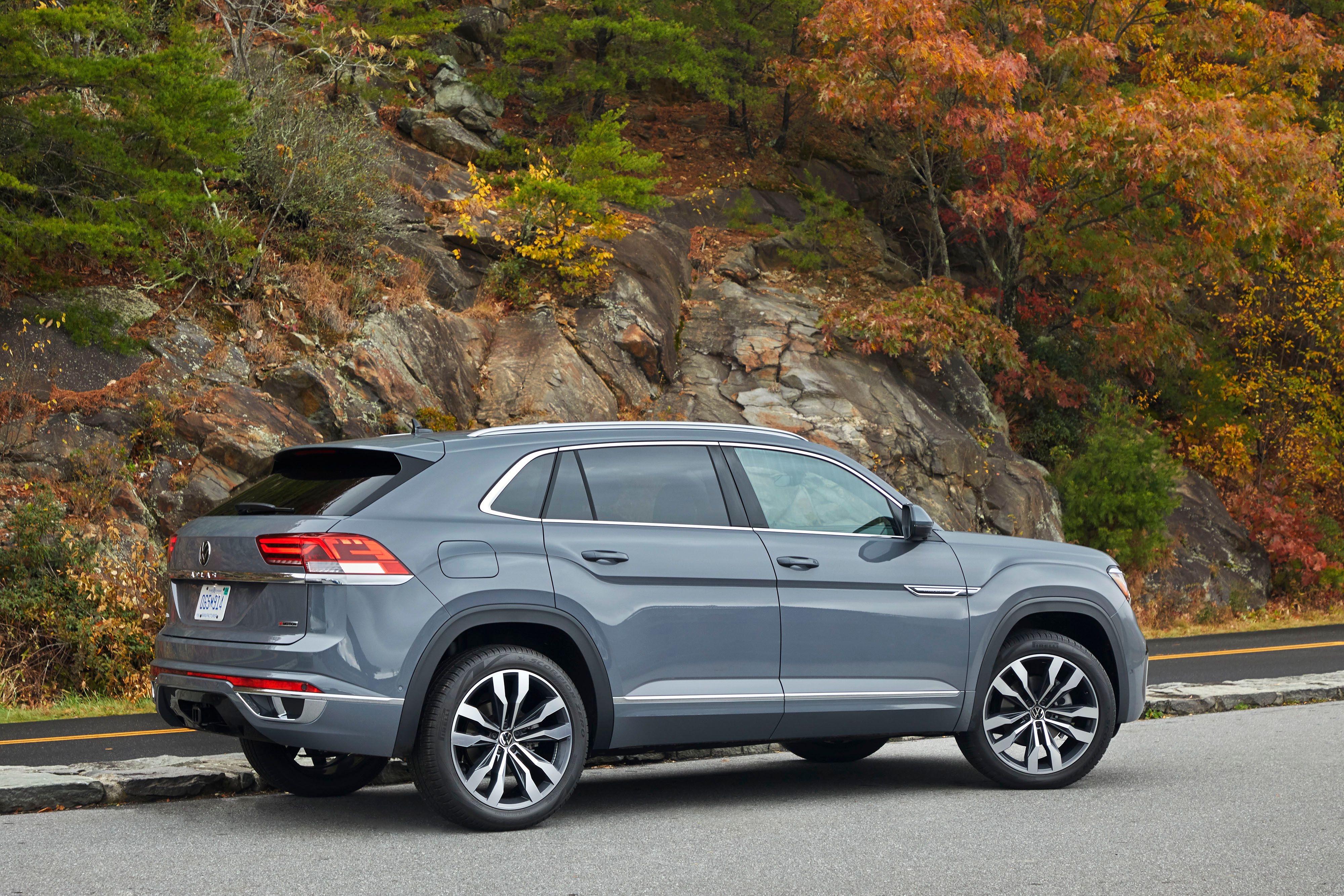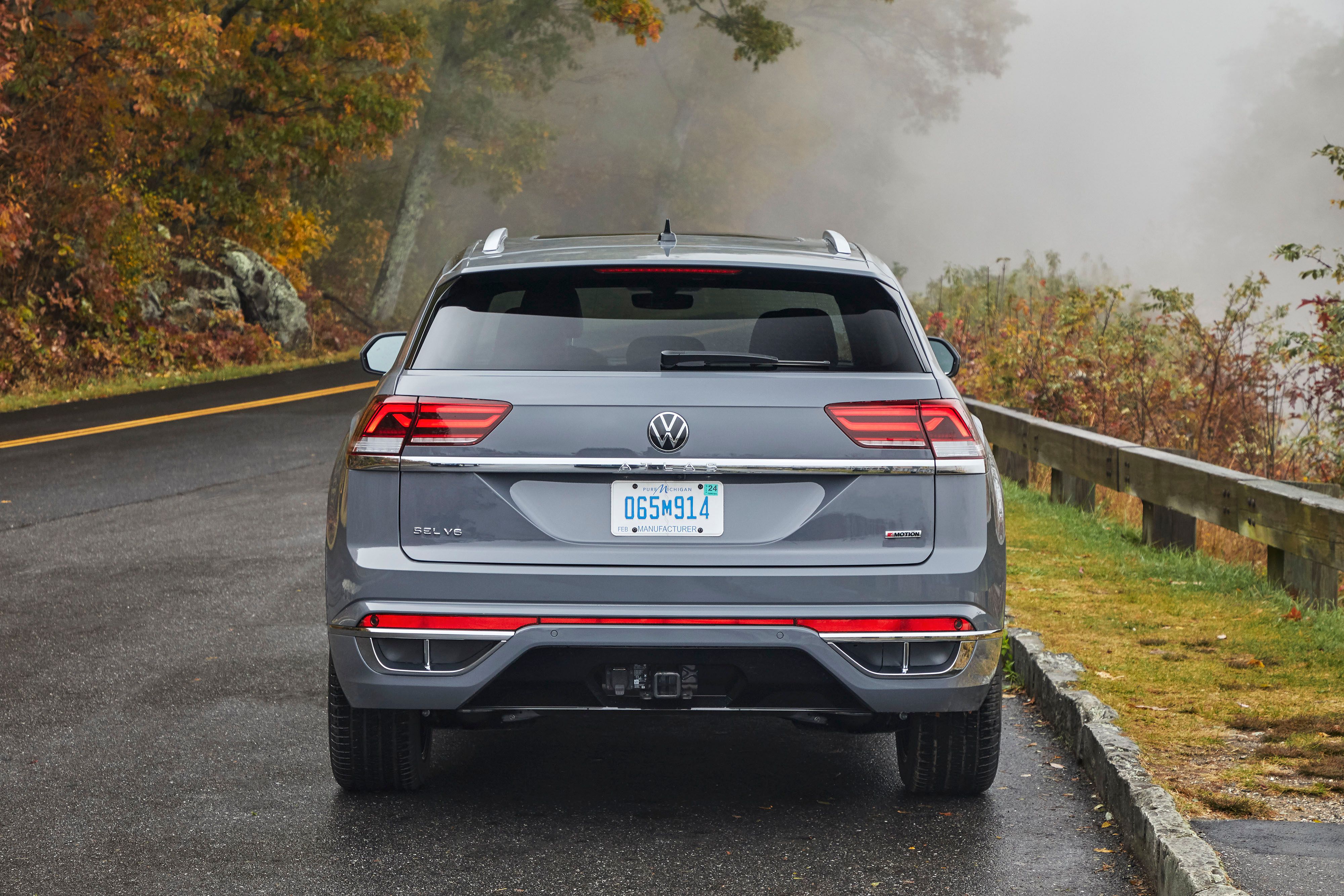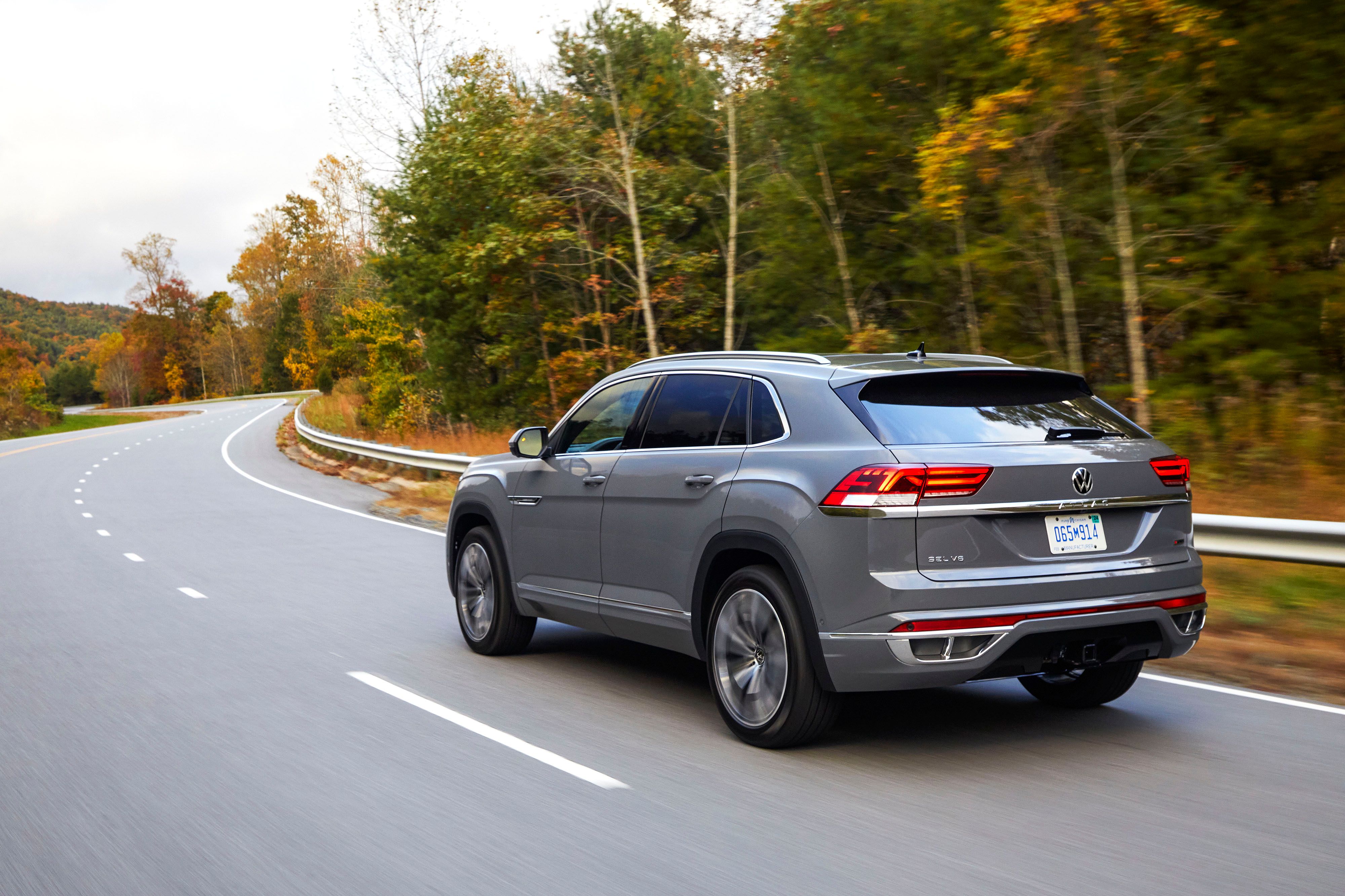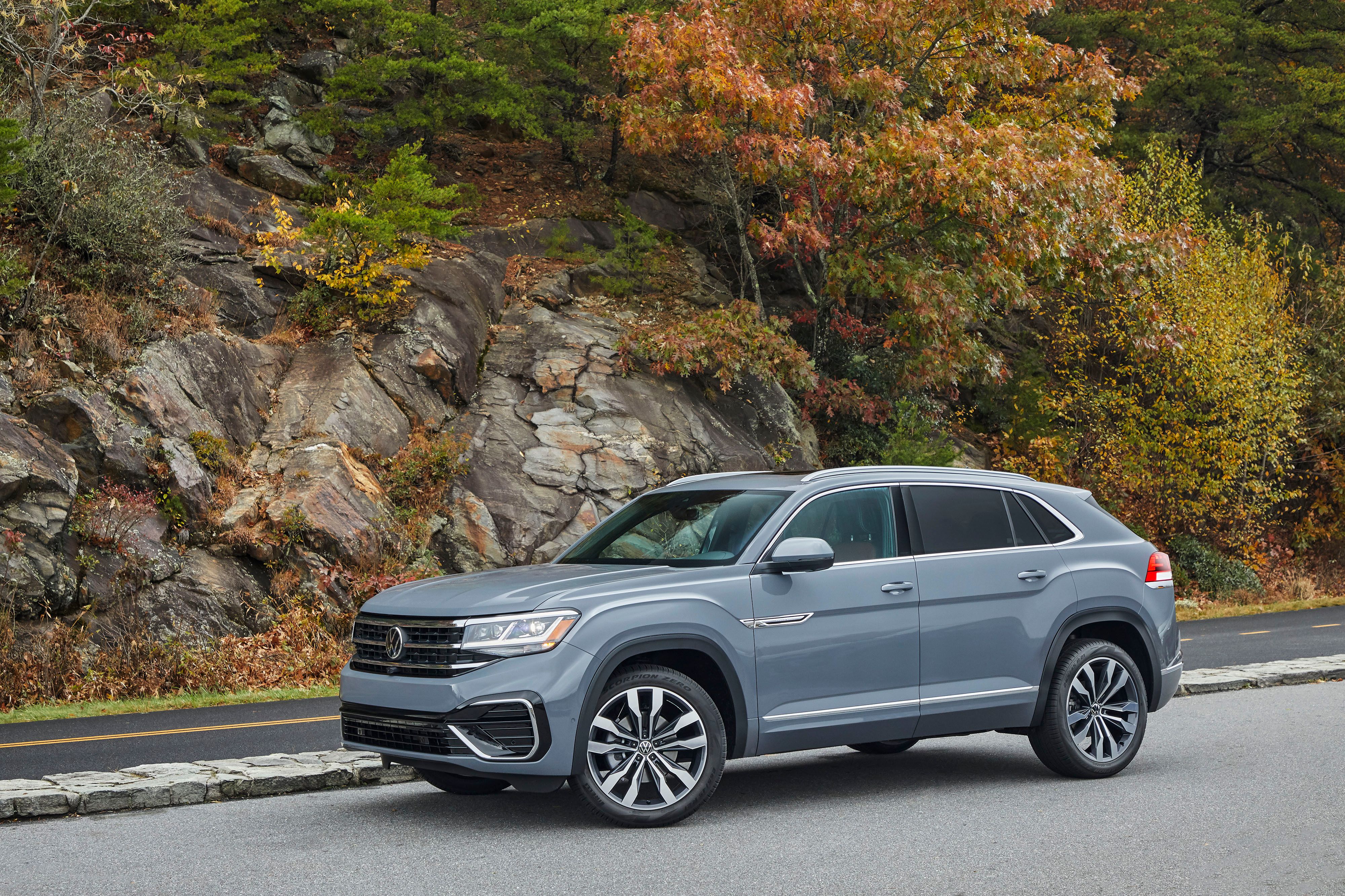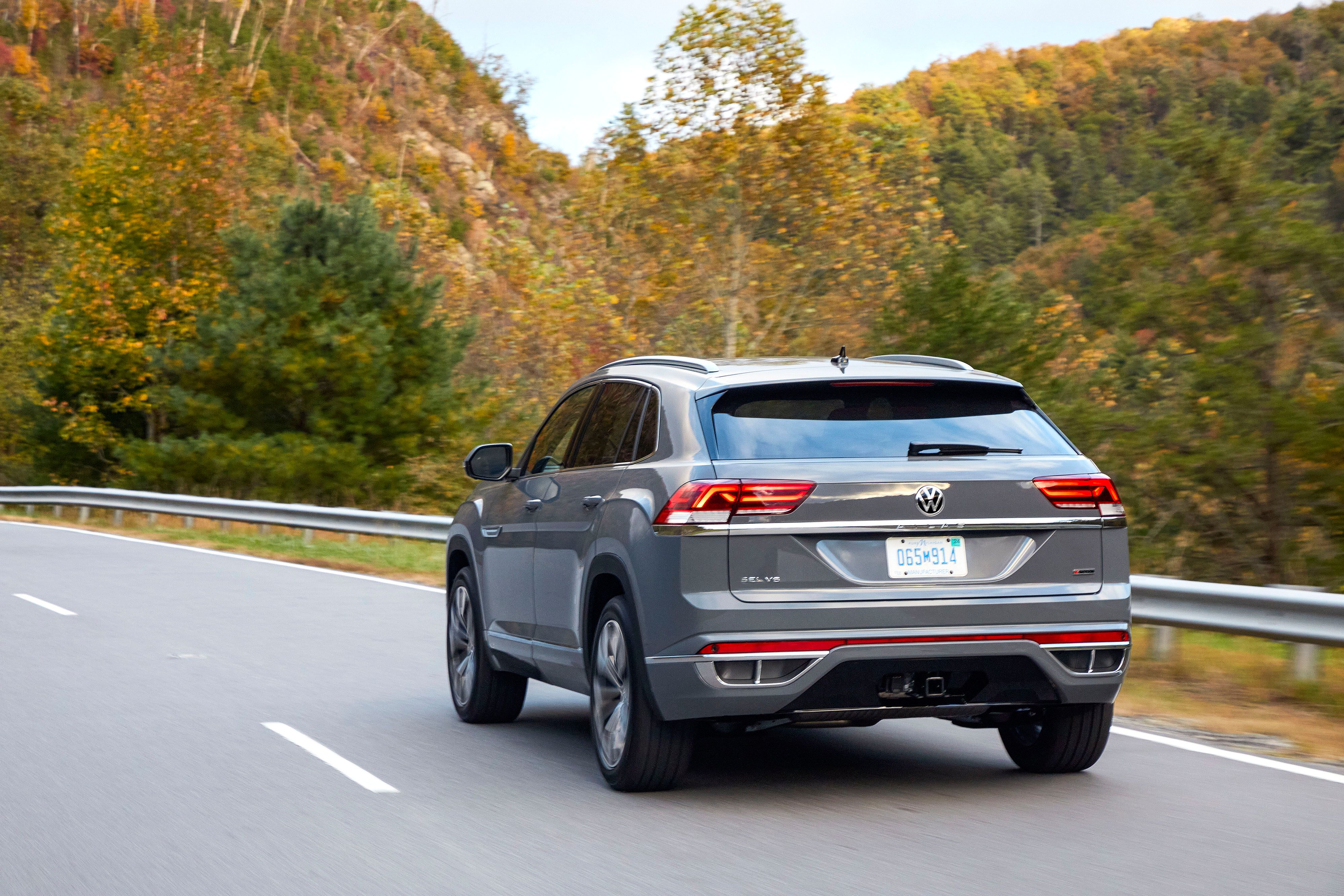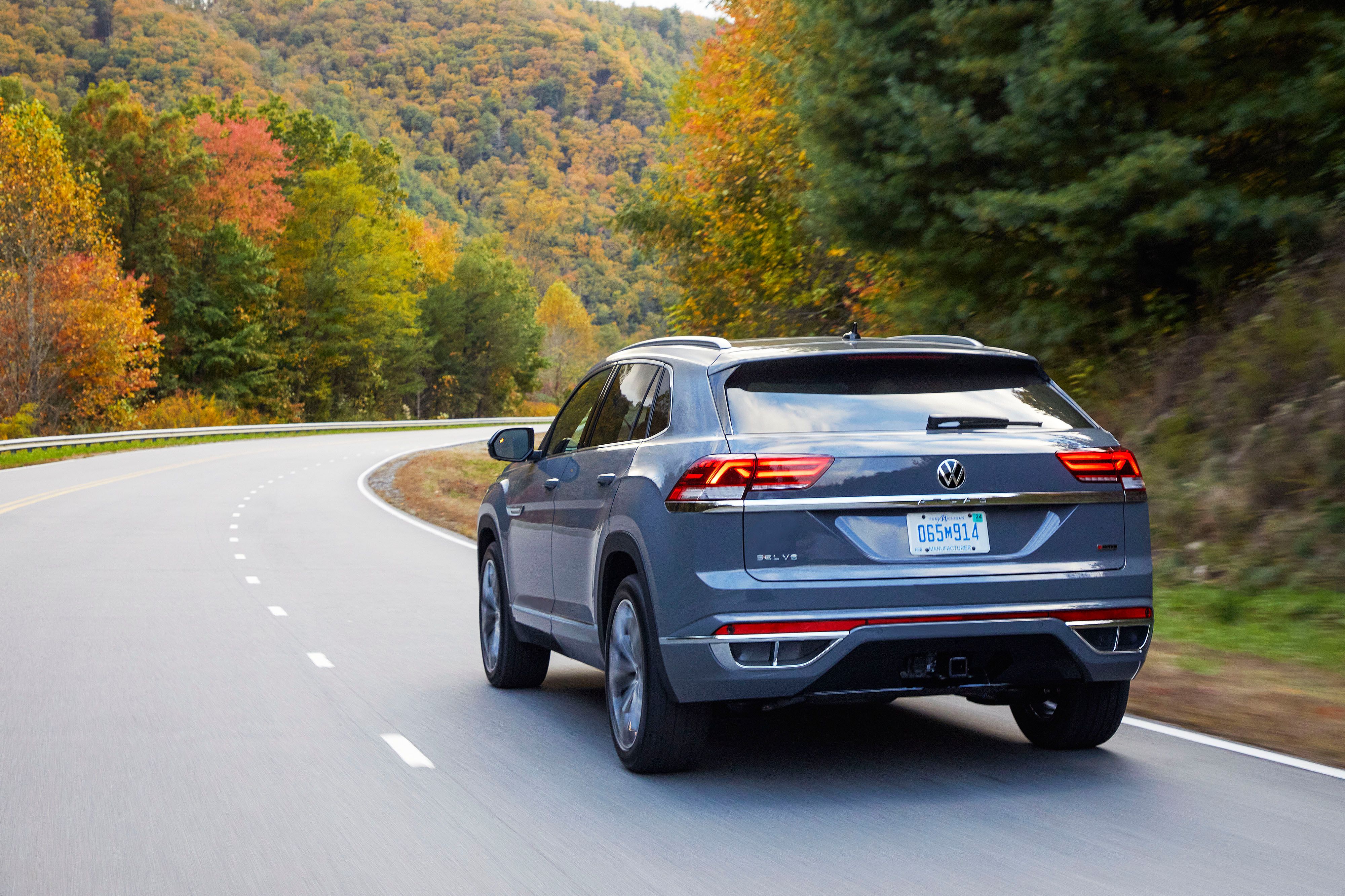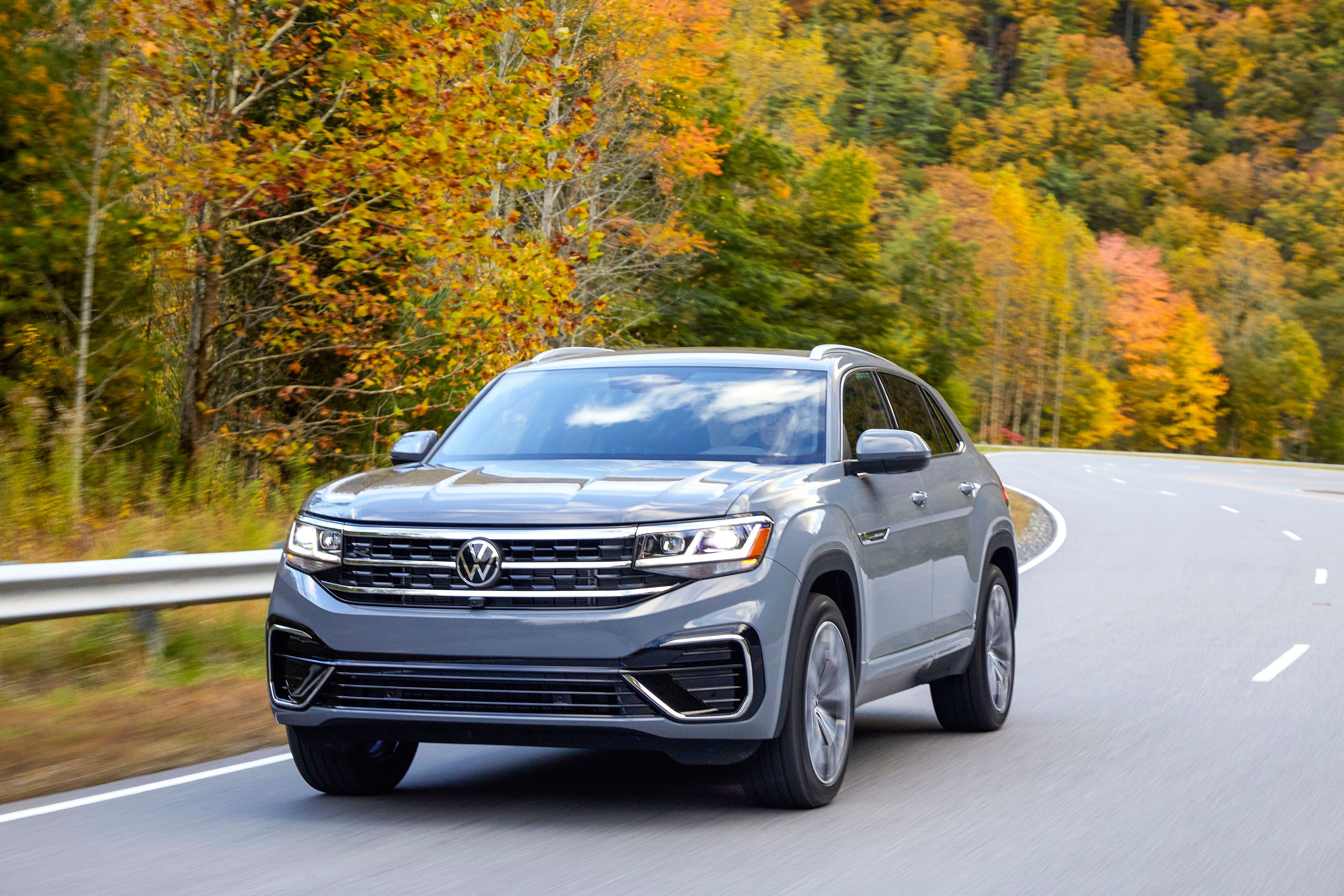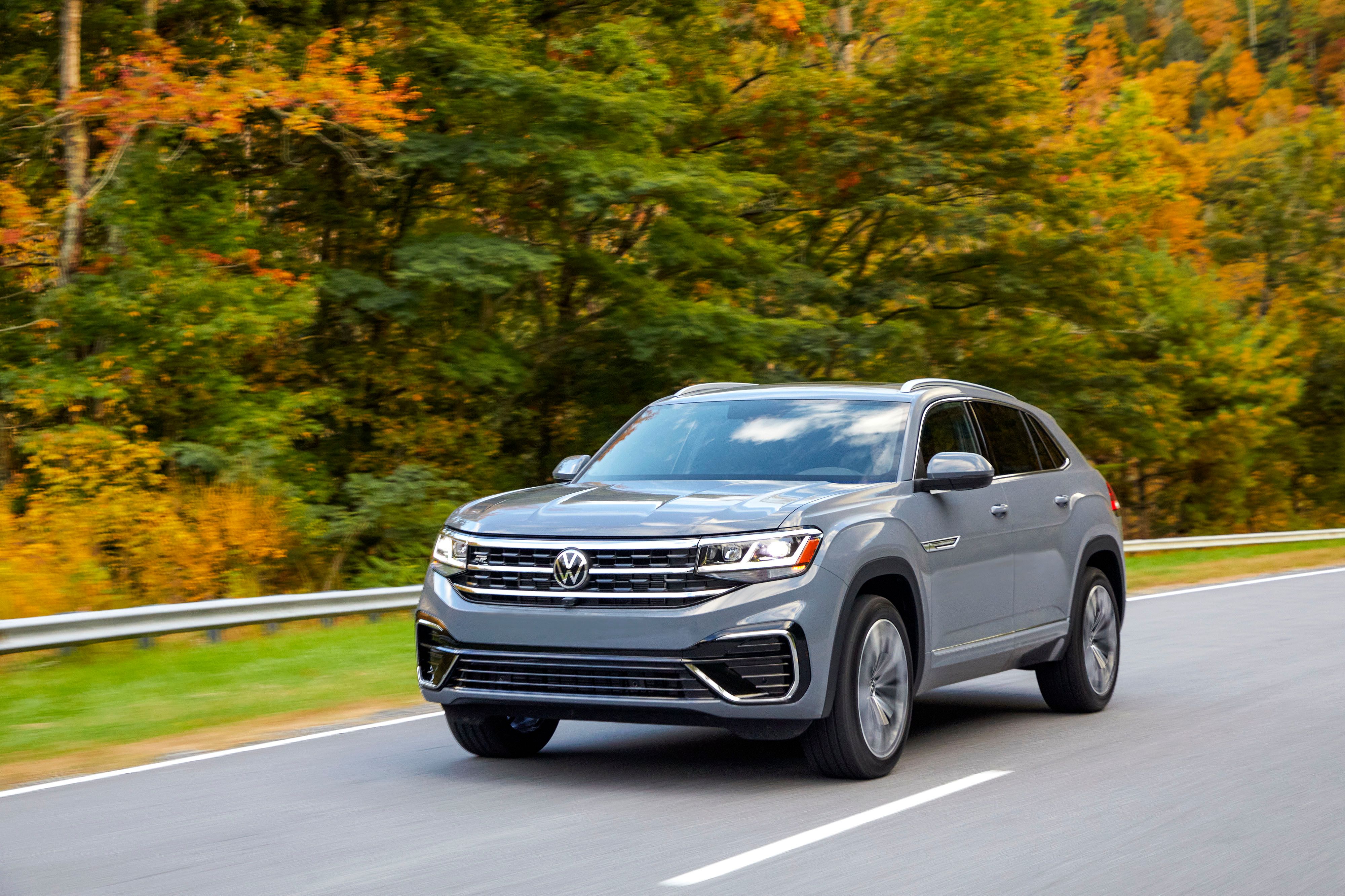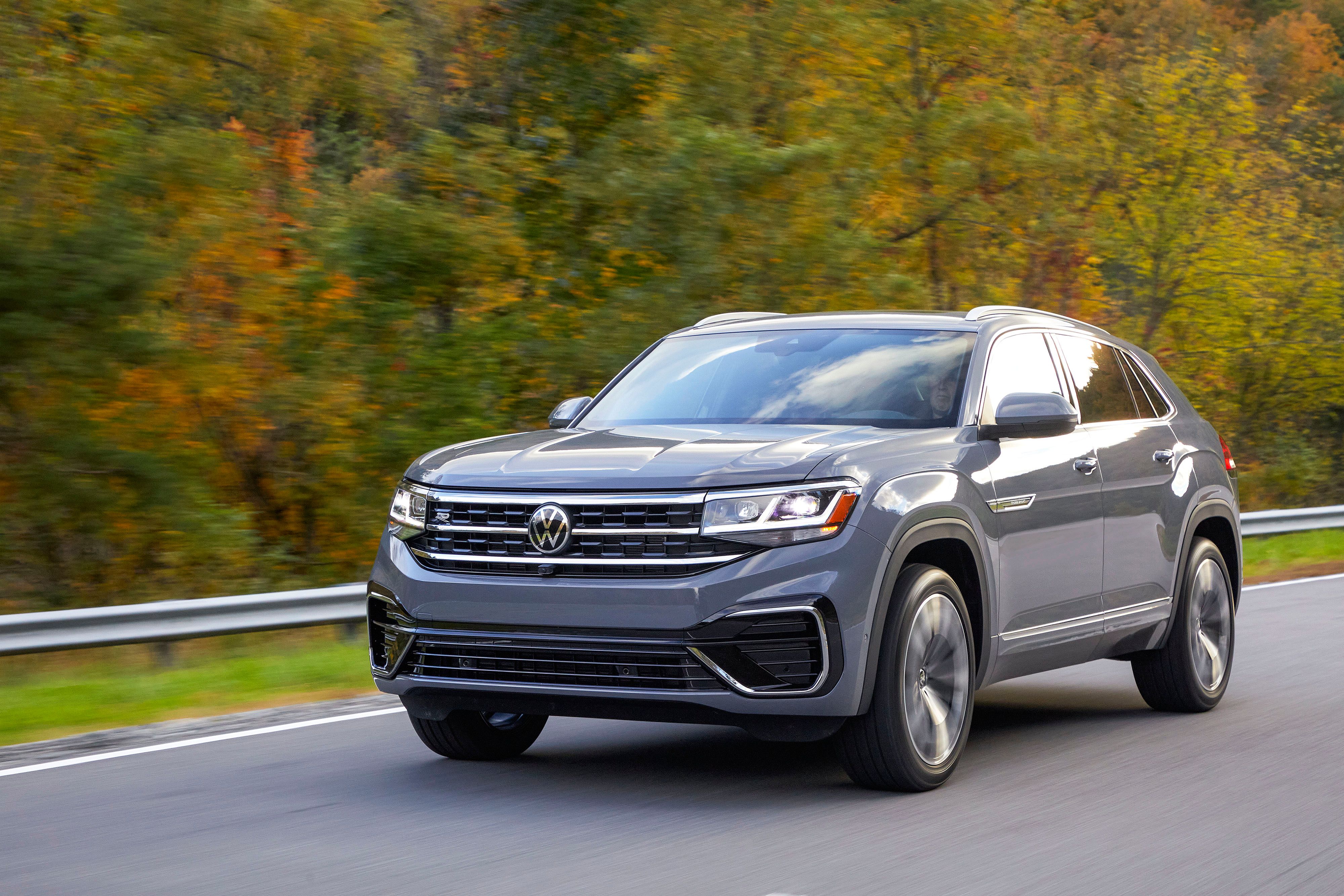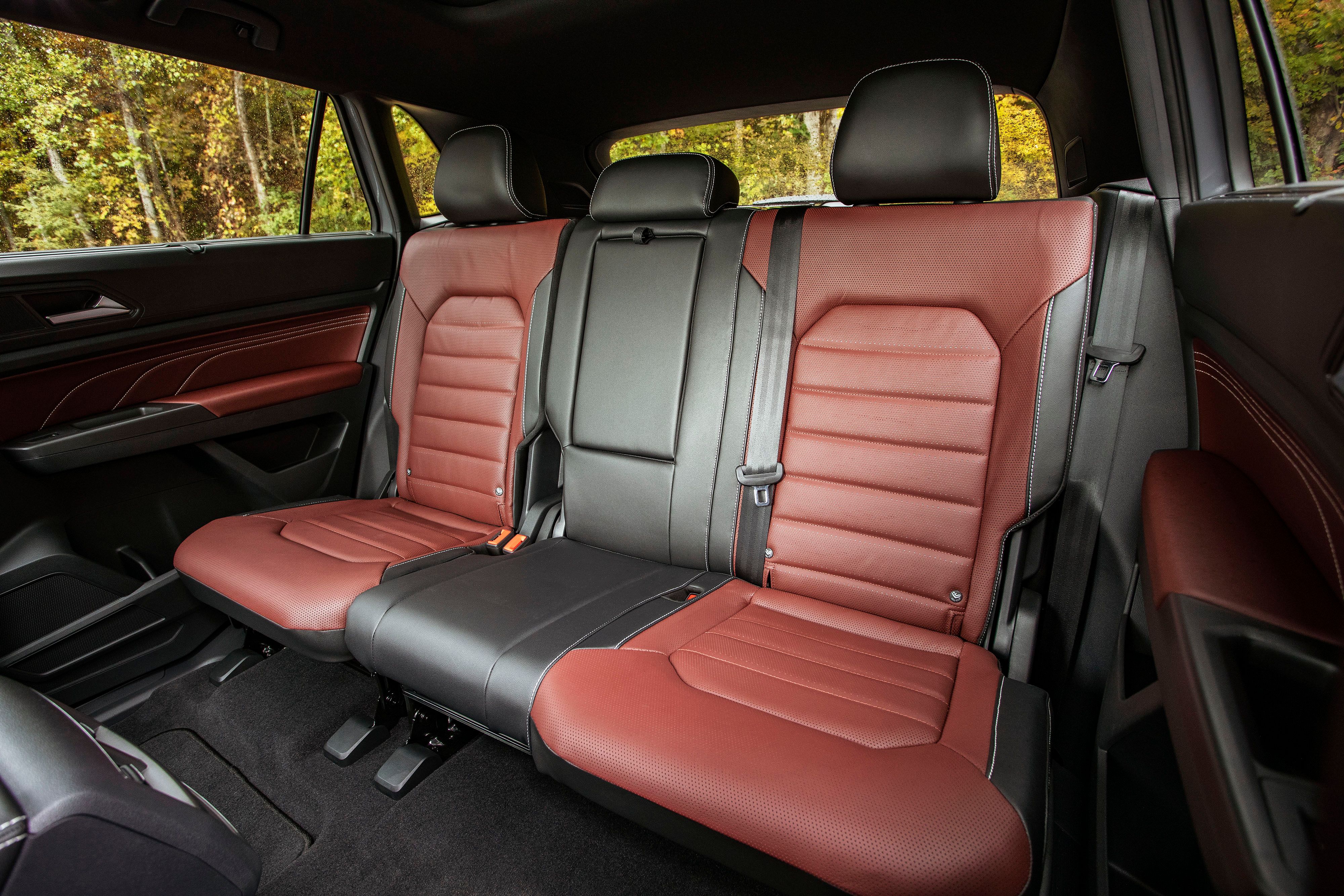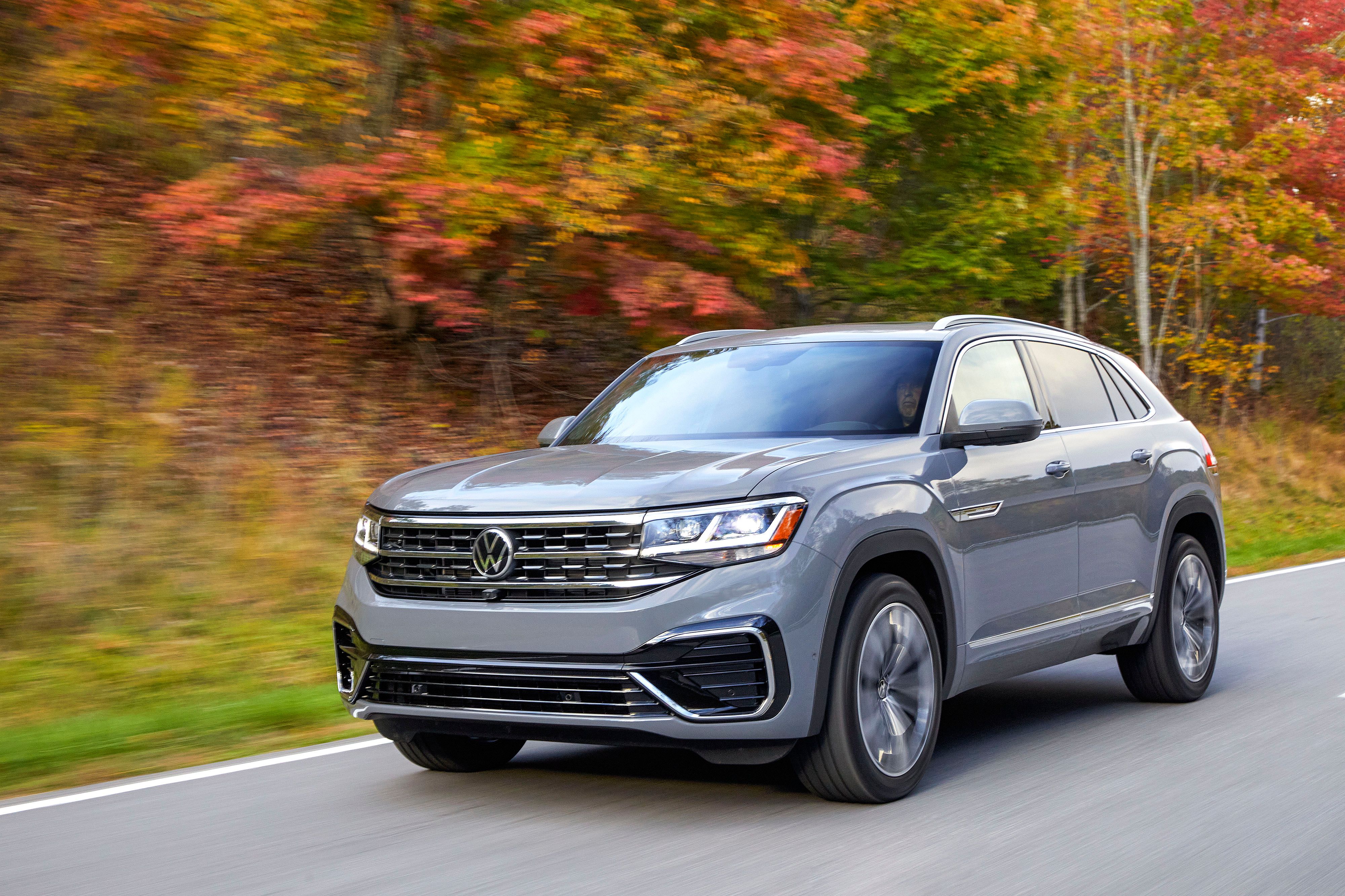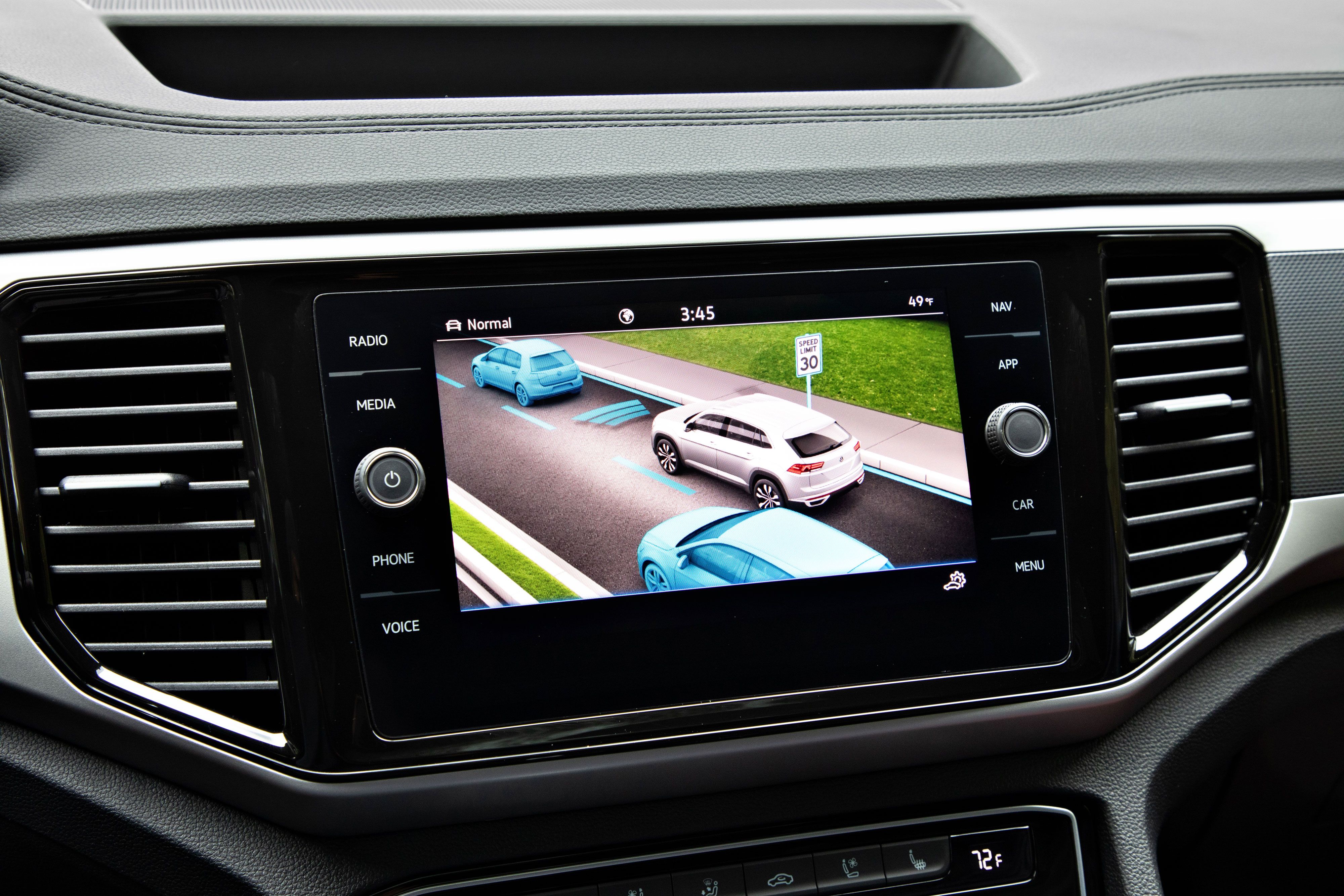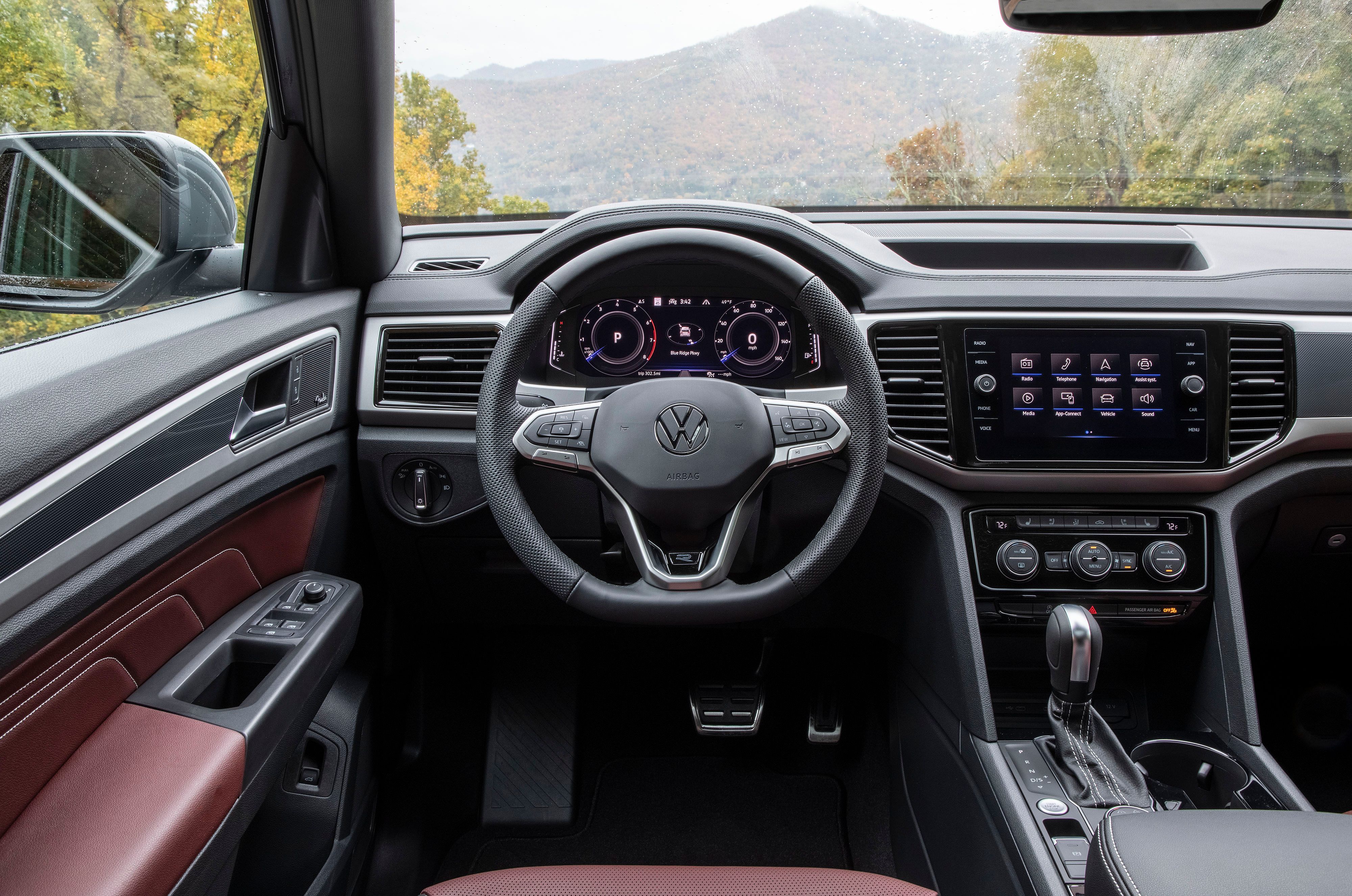BMW has the X6 and X4, Mercedes-Benz the GLE and GLC Coupe, Audi created the Q8, and Porsche’s Cayenne Coupe is fresh off the press. So here comes Volkswagen, trumpeting its intentions to join the SUV-coupe craze with a sloping-roof design that uses the Atlas as a starting point.
Ladies and gentlemen, this is the U.S.-only Volkswagen Atlas Cross Sport. Yes, it’s an SUV-coupe of sorts, because guess what: that’s precisely what was missing from VW’s stable, a model that belongs to the niche of a niche created to appease the buyer’s appetite for sloped-roof yet still high-riding SUVs that don’t require too much investment from the carmaker, which makes them the ultimate cash cow for whoever builds them. Obviously, the Atlas Cross Sport takes a lot after the on-sale-now VW Atlas, but as usual, there’s more than meets the eye. Let’s check it out.
2020 Volkswagen Atlas Cross Sport
- Make: Array
- Model: 2020 Volkswagen Atlas Cross Sport
- Engine/Motor: inline-4
- Horsepower: 235 @ 4500
- Torque: 258 @ 1600
- [do not use] Vehicle Model: Array
2020 Volkswagen Atlas Cross Sport Exterior
|
|
ids=866696,866697 |
no_overlay=false |
before_label=Volkswagen Atlass Cross Sport |
after_label=Volkswagen Atlass > |
In any case, the regular Atlas is 198.3 inches long, 78.3 inches wide, and 70 inches high with a wheelbase of 117.3 inches. The Cross Sport version, on the other hand, keeps the same wheelbase length but is 2.8 inches shorter at 195.5 inches. What’s more, the Cross Sport is also 2.3 lower than the regular Atlas (you’ll have to thank the SUV-coupe shape for that), coming in at 67.7 inches high. The width stays the same at 78.3 inches.
For the Atlas Cross Sport, Volkswagen based the better part of the design work on the original Atlas, but it also applied some tweaks here and there. For example, the front grille gets a three-bar design (with added chrome, of course), and the light clusters are not grouped in a square-y shape anymore, but extend towards the wheel arches, amplifying the width of the entire front end. The front bumper was also tweaked with two or three drops of aggressiveness, while the hood looks more sculpted than what we normally get in the regular Atlas.
It’s also worth mentioning that the Atlas has fake rectangular exhausts - black plastic and chrome bits are used to mimic the real deal, basically - and by the looks of it, the Cross Sport has them too, albeit enlarged and split in the middle, as if VW’s designers were trying to replicate a quad-exhaust setup. Not cool, Volkswagen, not cool.
2020 Volkswagen Atlas Cross Sport Interior
For example, the passenger volume inside the seven-seat Atlas is 153.7 cubic feet, which is a lot more generous than what the Cross Sport has to offer, regardless of what VW’s PR talk might try to suggest. Now, it’s safe to assume that headroom, shoulder room, hip room, and legroom remain unaltered for the first row of seats, so the ratings we’re looking at are 41.3 inches, 61.5 inches, 58.2 inches, and 41.5 inches, respectively.
Design-wise, don’t expect the Cross Sport’s cabin to look that much different. Volkswagen does say that it tweaked the interior a bit, which is only natural but not by much. In this regard, the Cross Sport will feature a new steering wheel with more buttons, contrast stitching for the seats and door inserts, as well as wireless mobile charging.
Optionally, customers will be able to specify the heated rear seats and the heated steering wheel, ventilated front seats, rear sunshades, and the 12-speaker Fender Premium Audio System that’s also offered on the regular Atlas. What’s more, the Cross Sport will also offer the VW Digital Cockpit on higher trims (SEL and SEL Premium, that is). Otherwise, the cabin topography is identical to what we get from the regular Atlas.
2020 Volkswagen Atlas Cross Sport Drivetrain
On the oomph front, the single-scroll-turbo 2.0-liter mill is good for 235 horsepower at 4,500 rpm and 258 pound-feet of torque from as low as 1,600 rpm, while the V-6 cranks out 276 horsepower at 6,200 rpm and 266 pound-feet of torque at 2,750 rpm. As we mentioned earlier, the Cross Sport can be specified with AWD regardless of the engine choice. Here, Volkswagen offers the 4MOTION permanent all-wheel-drive setup that incorporates a clutch-pack center differential, adaptive torque distribution, and four pre-defined settings: Onroad, Snow, Offroad, and Custom Offroad. Onroad comes with additional presets, such as Normal, Sport, Comfort, and Individual. These alter the working parameters for the engine, transmission, and steering, but they also fine-tune the likes of hill descent assist, hill start assist, and adaptive cruise control.
2020 Volkswagen Atlas Cross Sport specifications
|
Engine |
2.0L inline four cylinder, 16V, turbocharged/intercooled, FSI |
3.6L VR6 |
|---|---|---|
|
Bore |
3.25 in |
3.50 in |
|
Stroke |
3.65 in |
3.80 in |
|
Compression Ratio |
9.6:1 |
12.0:1 |
|
Horsepower (SAE) @ rpm |
235 @ 4500 |
276 @ 6200 |
|
Maximum torque, lb-ft @ rpm |
258 @ 1600 |
266 @ 2750 |
|
Towing |
2000 lb |
2000-5000 lb |
2020 Volkswagen Atlas Cross Sport Pricing
There’s no word on pricing yet, but VW says the new Atlas Cross Sport will be offered in eight trim levels. That’s right, eight: S, SE, SE with the Tech package, SE R-Line with the Tech package, SEL, SEL R-Line, SEL Premium, and SEL Premium R-Line. Official details on price and whatnot are expected to surface ahead of the model’s market launch, which will take place in spring 2020.
VW builds the Atlas Cross Sport on the same production line that churns out the regular Atlas and the Passat sedan at the Volkswagen Chattanooga Assembly Plant.
2020 Volkswagen Atlas Cross Sport Competition
Chevrolet Blazer
The Chevrolet Blazer was introduced in 2018 as a lifestyle SUV of sorts. It slots between Chevy’s Equinox and Traverse SUVs and places a lot of emphasis on Camaro-inspired looks. Size-wise, the Blazer sits on a 112.7-inch wheelbase and stretches to 191.4 inches in length. The Blazer is 76.7 inches wide and 67 inches high.
For the Blazer, Chevrolet is offering three engine choices. The first one is a 2.0-liter inline-four turbocharged powerplant that makes 235 horsepower at 6,000 rpm and 260 pound-feet of torque between 1,450 rpm and 3,500 rpm. Numero dos is a 2.5-liter four-cylinder naturally-aspirated unit that’s shared with the Colorado, GMC Canyon, and GMC Acadia. The unit makes 193 horsepower and 188 pound-feet of torque. Those who believe they need more grunt have the option of picking the 3.6-liter V-6 unit, which is set up to produce 308 horsepower and 269 pound-feet of torque. Every model uses a nine-speed automatic transmission to handle the engine’s resources.
Read our full review on the 2019 Chevrolet Blazer
Hyundai Santa Fe
Without bringing so much visual drama as the Chevy Blazer, the Hyundai Santa Fe is another good looking alternative to the Volkswagen Atlas Cross Sport. The Santa Fe is 187 inches long, 75 inches wide, and its wheelbase measures 108.9 inches.
Engine-wise, the Santa Fe can be had in three variants, powered by two petrol units and one diesel mill. The oil burner displaces 2.2 liters and generates 190 horsepower at 3,800 rpm and 322 pound-feet of torque between 1,750 rpm and 2,500 rpm. The smaller gasoline engine is a 2.0-liter turbocharged unit good for 235 horsepower and 260 pound-feet of torque, while another choice is a 2.4-liter naturally-aspirated mill that churns out 285 horsepower at 6,000 rpm and 178 pound-feet of torque at 4,000 rpm. Regardless of what engine you pick, it marries to an eight-speed automatic gearbox, which can also be specified with steering-wheel-mounted shift paddles.
Read our full review on the 2019 Hyundai Santa Fe
Final Thoughts
There’s no doubt that Volkswagen is looking to supplement its income with the Atlas Cross Sport by letting it do battle in a segment that’s booming at the moment. Ignore the Sport in the SUV-coupe’s nameplate, though, because there’s nothing sporty about VW’s five-seat version of the larger seven-seat Atlas. Sure, if it follows in the footsteps of the regular version, the Cross Sport will offer above-average levels of comfort, space, and storage solutions, but don’t expect it to release endorphins upon acceleration or carve corners like a hot hatch. It simply won’t do that.
It’s also worth noted that while VW’s clientele doesn’t care too much about the look of its cars, the Atlas Cross Sport - while nicely proportioned - doesn’t feature that design uniqueness seen in the Blazer or Santa Fe. So we’ll refrain from speculative on whether the new Atlas Cross Sport will become a huge hit - time and sales reports will tell that above everything else.

